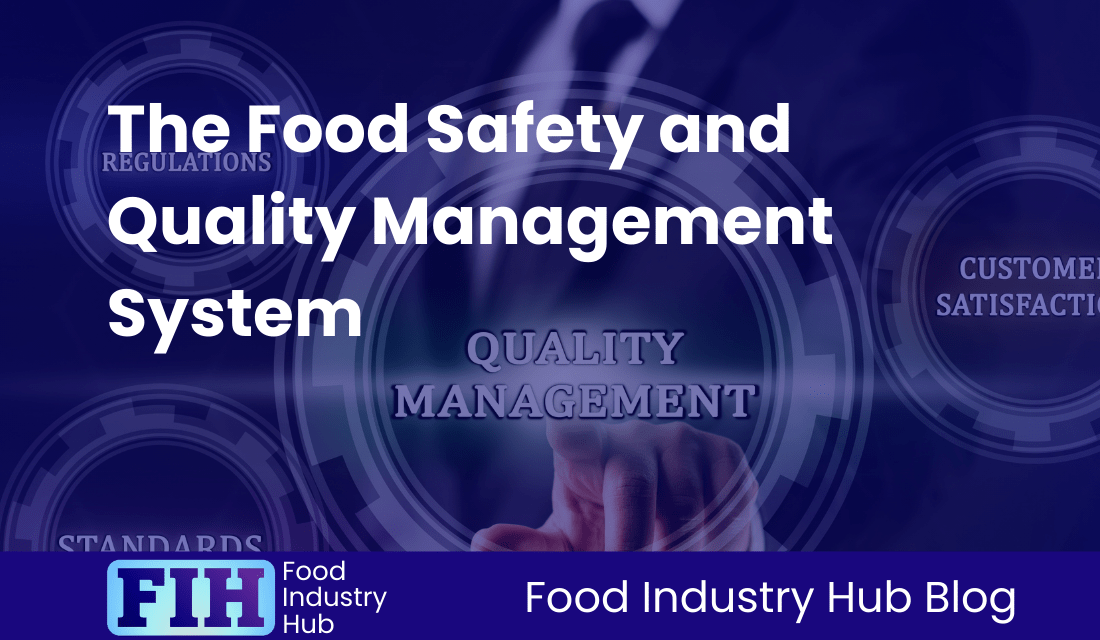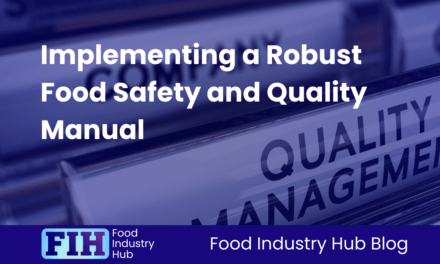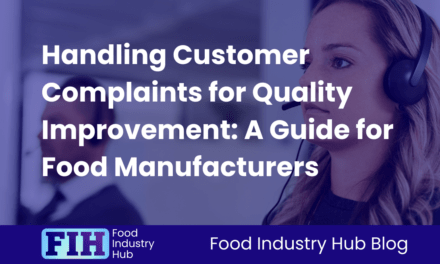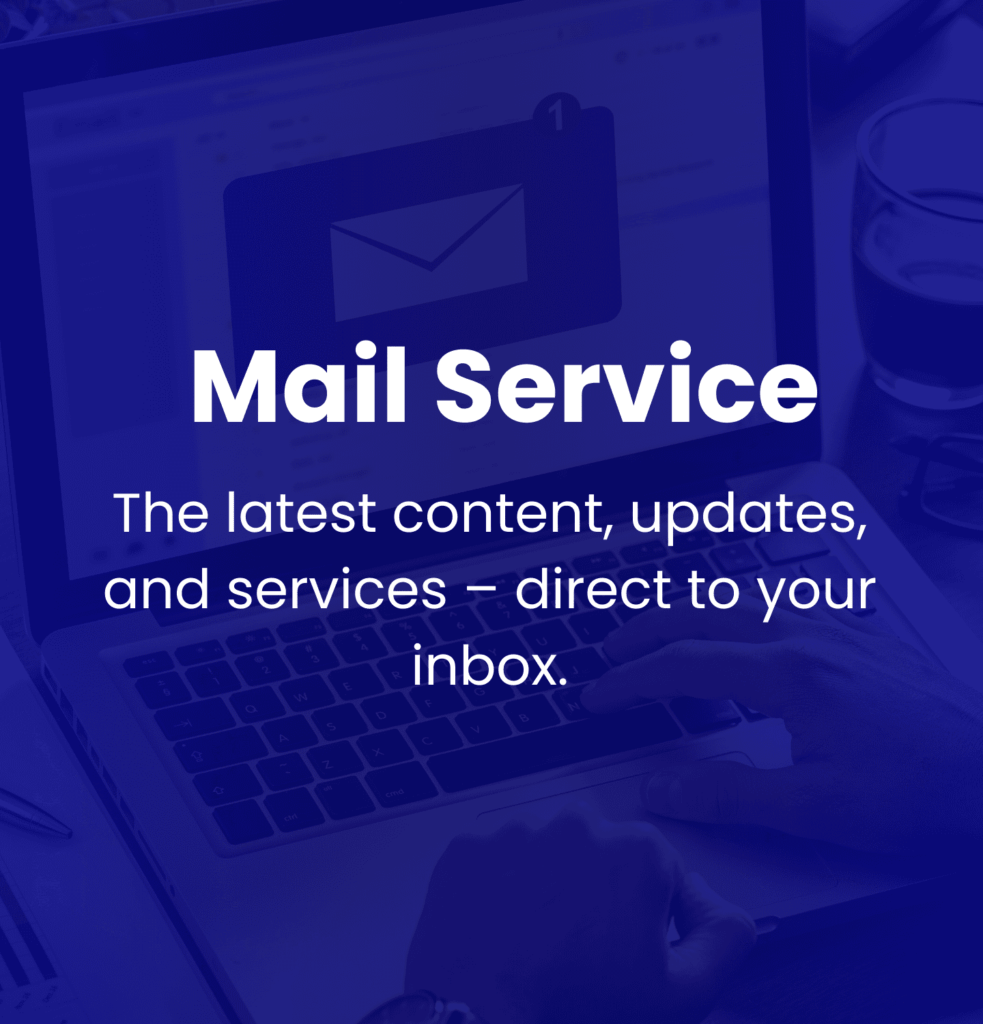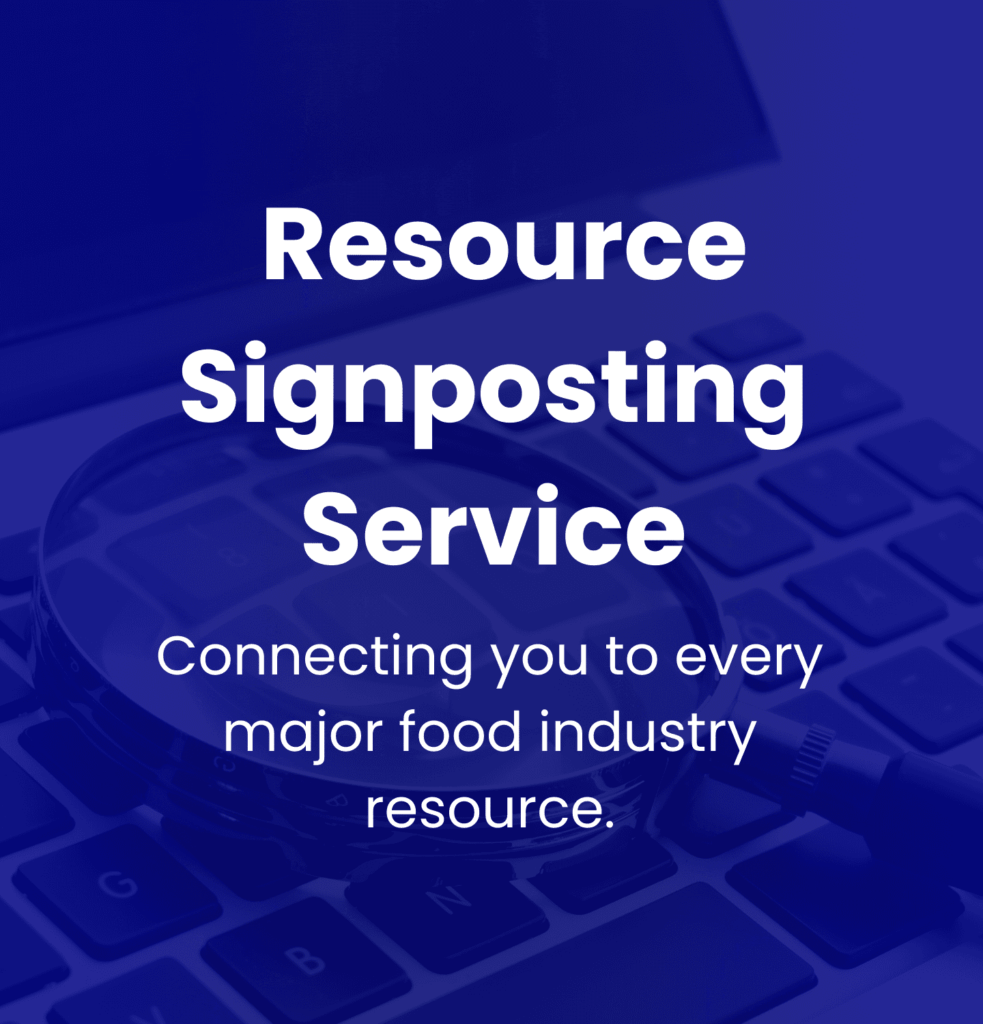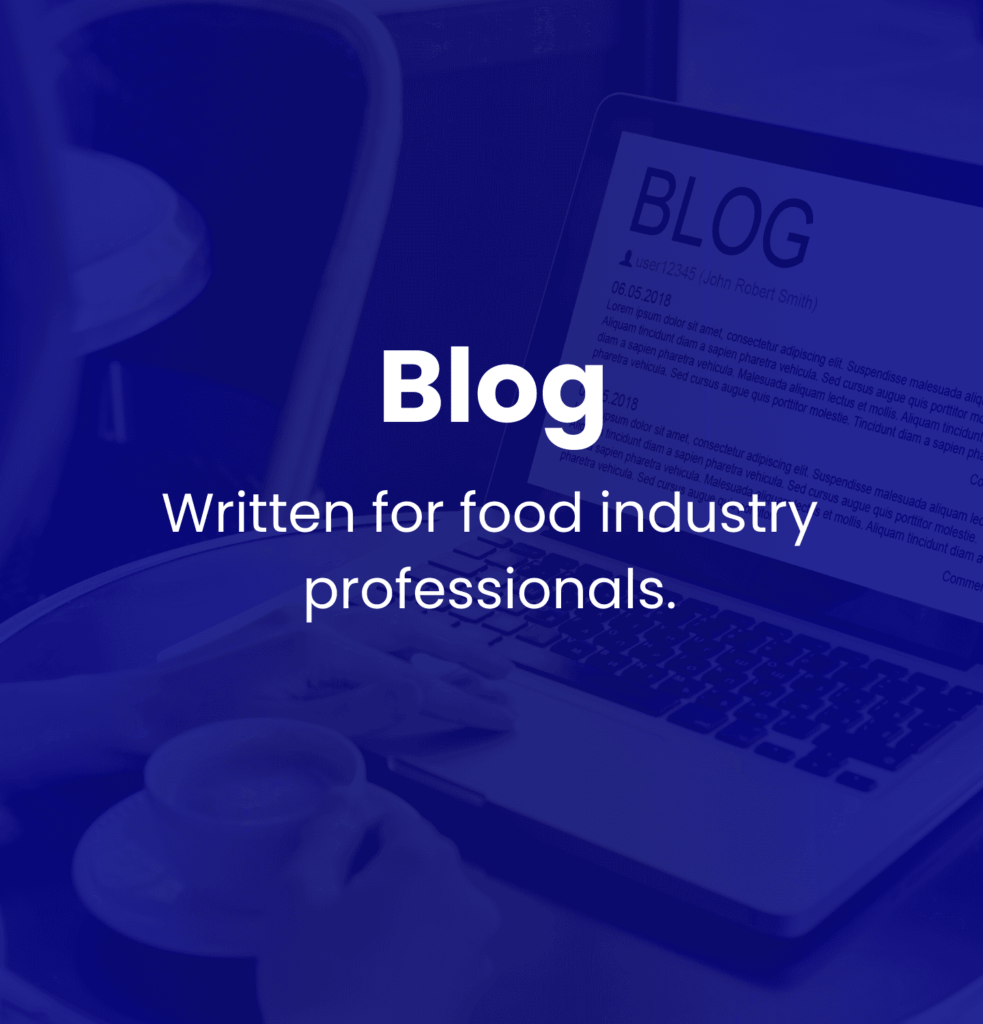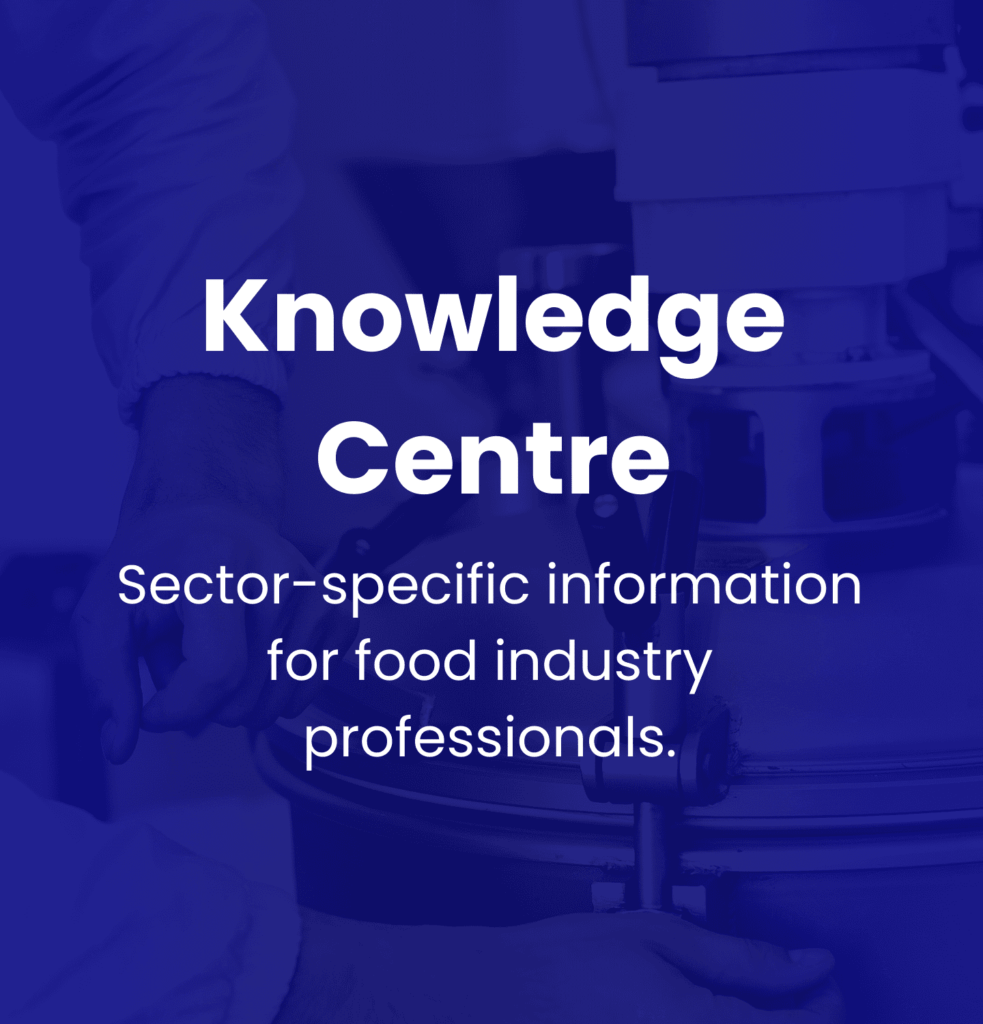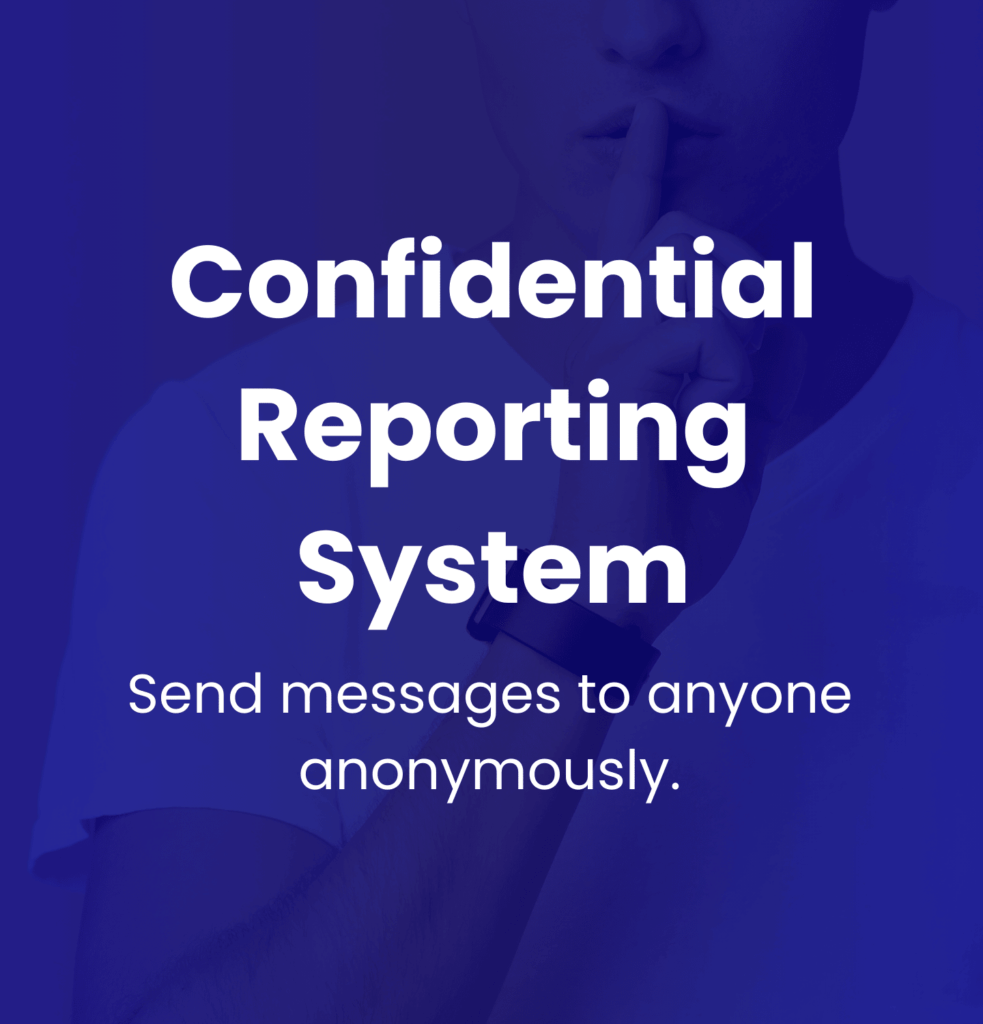Introduction
You’re probably aware that ensuring food safety is a complex process. It’s not just about selecting the freshest ingredients; it’s also about implementing a robust Food Safety and Quality Management System. This system is a comprehensive guide, detailing responsibilities, procedures, and checks to produce safe and high-quality food. It’s about maintaining clear records, conducting internal audits, and upholding transparency with consumers. Sounds detailed and intricate, doesn’t it? Well, you might be curious about how this system actually works in practice and how it contributes to public health. Let’s explore this further.
As we dive into the topic, you’ll be interested to know that Food Industry Hub offers integrated management systems for food manufacturers, which you can use to strengthen your assurance processes.
Table of Contents
Key Takeaways
- The food safety and quality manual outlines quality and safety objectives and responsibilities.
- It requires clear documentation of processes and record maintenance for traceability and quality control.
- A robust document control system manages creation, updates, and access to operational documents.
- Regular internal audits are conducted to evaluate the food safety management system and ensure compliance.
- The system also emphasises consumer responsibility and transparency, including clear information on product characteristics.
- The system emphasises strong supplier relationships for consistent, high-quality raw materials.
- It requires detailed risk assessments for each raw material with food safety and quality outcomes.
- The system demands a risk-based approach for supplier approval, backed by regular audits and performance reviews.
- It necessitates robust traceability systems and supplier information management for effective monitoring and potential recall situations.
- The system mandates control of non-conforming products to ensure consumer safety and quality.
- It requires a robust traceability process for accountability of every ingredient and quick response during food safety incidents.
- Comprehensive procedures and documentation are necessary for efficient traceability and non-conforming product management.
- The system emphasises quantity checks, mass balance for food products, and effective complaint handling for continuous improvement.
- It includes contingency plans for emergencies and post-incident product management to maintain quality and safety.
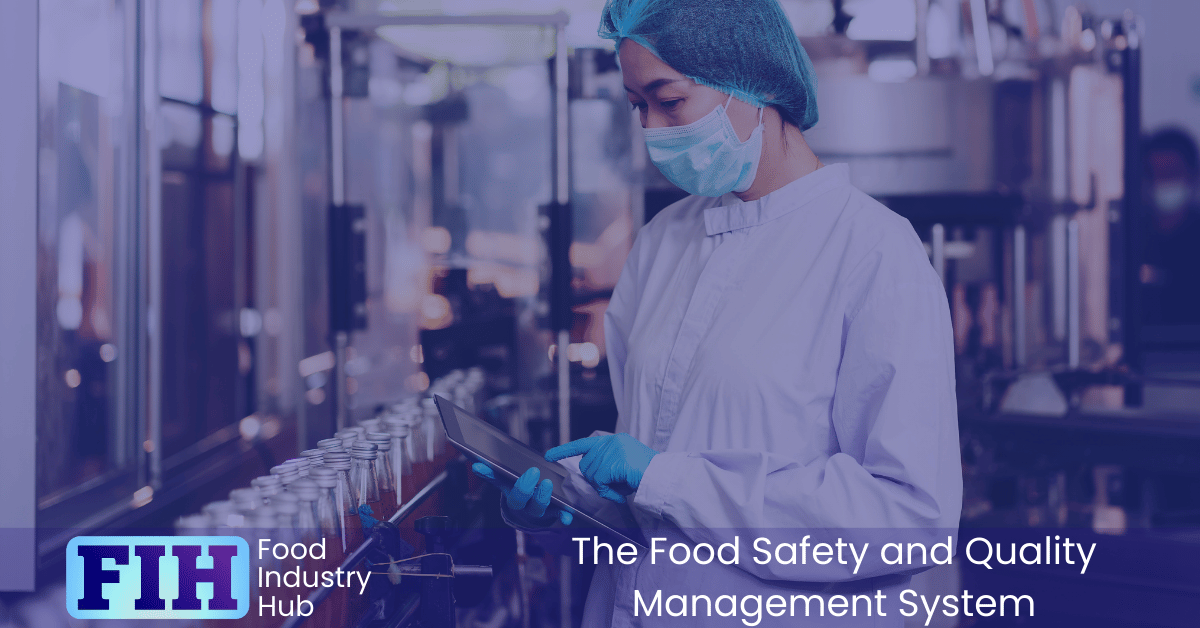
Food Industry Hub Management Systems can significantly boost the effectiveness of your food safety and quality management system, leading to improved confidence and elevated quality assurance throughout your operations.
The Food Safety and Quality Manual
The food safety and quality manual is a comprehensive document that outlines your company’s food safety and quality objectives, responsibilities, and measures. Think of it as a blueprint, guiding your company’s actions and decisions in the pursuit of food safety and quality.
Your manual shouldn’t merely be a document that gathers dust on a shelf; it should be a living, breathing part of your organisation.
In the quality manual, you’ll detail your company’s food safety policy, express your commitment to meet regulatory and customer requirements, and outline your methods for achieving these goals.
For precision and consistency in food production, your company’s procedures, working methods, and practices need to be meticulously assembled in a printed or electronic quality manual. By doing so, you’re creating a gold standard, a playbook if you will, that each team member can reference.
The quality manual is an evolving document that should reflect your company’s ongoing commitment to food safety and quality assurance. It’s not static, but dynamic, growing and changing as your company does.
Your quality manual is more than just a document. It’s a tangible representation of your commitment to your customers’ safety. It’s a tool that helps everyone in your organisation understand their roles and responsibilities when it comes to maintaining food safety standards.
In essence, the quality manual is the backbone of your food safety and quality management system. It’s not just a set of guidelines, but a living, breathing part of your organisation.
The Food Safety and Quality Manual Must Be Fully Implemented and The Manual or Relevant Components Must Be Readily Available to Relevant Staff
Your manual, whether printed or electronic, becomes the lifeline for maintaining food safety and preserving the quality of your products.
Not only does your manual need to be comprehensive, but it also needs to be accessible. It’s not enough to have a well-documented manual that’s hidden away in a file cabinet or buried in a computer folder. Your staff should be able to quickly and easily access the manual or its relevant components.
Your quality manual facilitates training, helping new hires understand your company’s food safety and quality controls. It’s also a tool for demonstrating due diligence, proving that you have taken every step to produce a safe product.
In short, a fully implemented and readily available manual is vital for your company’s success.
All Procedures and Work Instructions Must Be Clearly Legible, Unambiguous, In Appropriate Languages and Sufficiently Detailed to Enable Their Correct Application by Appropriate Staff
It’s essential that you document these processes in a way that supports due diligence and facilitates consistency.
Keep in mind that literacy levels and language competencies vary among staff. Therefore, it’s crucial that you provide the information in appropriate languages.
Don’t rely solely on written instructions. Include photographs, diagrams, or other pictorial instructions to ensure everyone understands.
Think about it – if your team can’t understand the instructions, they can’t apply them correctly. That could lead to serious food safety issues, negatively impacting your product’s quality.
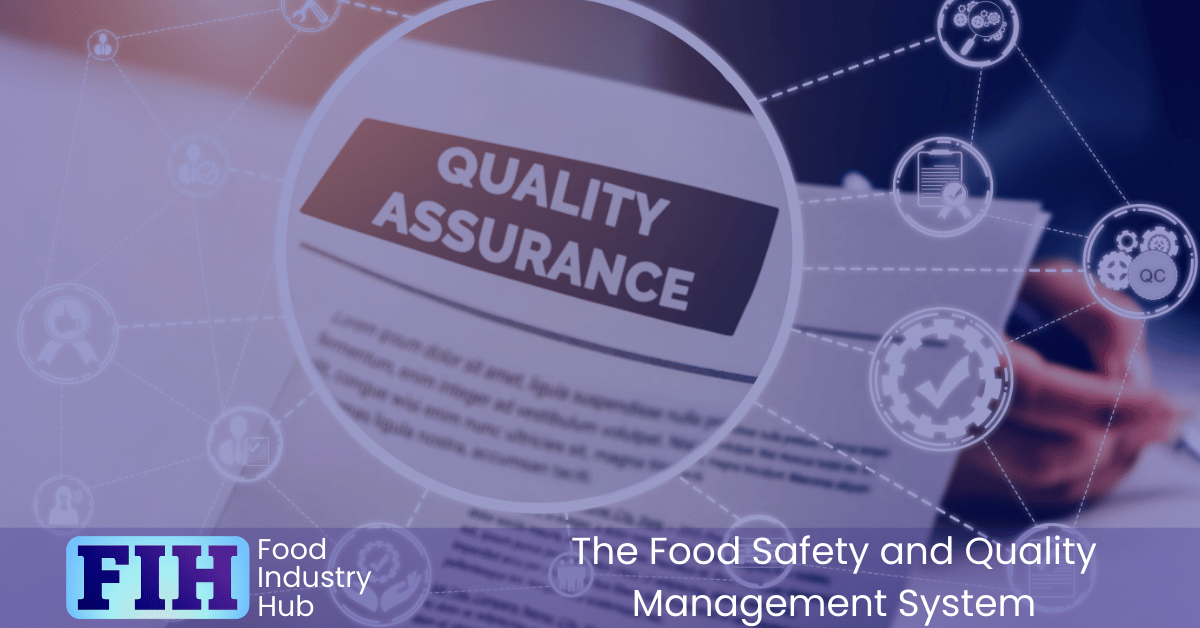
Document Control
To maintain exceptional food safety standards, you need to have a robust document control system. This isn’t just about keeping track of numerous files and documents. It’s about creating, updating, and managing the critical documents that dictate how your organisation operates.
Think about it as the heart of your management system. It’s what ensures consistency, reduces mistakes, and maintains the quality of your food products. Document control allows you to know who wrote a procedure, who approved it, and who can access it.
It also ensures that obsolete documents are replaced with updated versions, which prevents the use of outdated procedures that can risk food safety.
Remember, document control isn’t a one-time task. It’s a continuous process that requires regular reviews and updates. Every time there’s a change in your process or procedure, your documents should reflect that.
To uphold food safety and quality, your company must manage its documents meticulously. This includes securing electronic documents with authorised access, amendment control, or password protection.
The Company Must Have a Procedure to Manage Documents Which Form Part of The Food Safety and Quality System
You need to establish a thorough procedure to manage your documents that form part of your food safety and quality system. This includes running a dependable document control system ensuring only the correct, most recent versions of documents are in circulation and use.
Listing All Controlled Documents Indicating the Latest Version Number
Why is document control critical in food safety and quality management?
It’s simple. You can’t ensure safety and quality without a reliable system. Keeping a list of all controlled documents with the latest version number helps you track changes, avoid errors, and maintain consistency.
Without it, you’re risking food safety and quality. It’s a small step, but it’s pivotal in your management system.
Identification And Authorisation of Controlled Documents
You must operate an effective document control system, ensuring only correct versions are in use. This requires a procedure to manage controlled documents, forming part of your food safety and quality system.
It’s not just about having documents; it’s about controlling them effectively.
Recording Of the Reason for Any Changes or Amendments to Documents
Maintaining a record of reasons for any changes or amendments to documents is a critical aspect of an effective document control system.
It’s not enough to just control changes; you must also document why changes were made.
Replacing Existing Documents When They Are Updated
When updating your documents, it’s crucial to have a robust system in place for replacing the old versions. This ensures you’re always using correct and up-to-date documents.
It’s mandatory to manage these documents diligently as they’re part of your food safety and quality system. Without an efficient document control system, you risk using outdated or incorrect information, compromising your company’s standards.
Where Documents Are Stored in Electronic Form These Must Be Stored Securely
Security is paramount when storing documents in electronic form. You must ensure that your company operates an effective document control system. This system is critical to making sure that only the correct versions of documents, such as recording forms, are available and in use.
Consider authorised access: who needs to see these documents? Is it everyone in the company, or just a specific department? You’ll need to establish a process for granting access, and it’s essential to keep this updated. When employees leave or change roles, their permissions should be reviewed and adjusted as necessary.
Next, think about control of amendments. This means tracking changes to documents, so you know who made what changes and when. You might want to use software that automatically logs changes, but remember, it’s not just about having the system; you have to use it effectively.
Where Documents Are Stored in Electronic Form These Must Also Be Backed Up to Prevent Loss
Building on the importance of secure document storage, it’s equally vital to have an effective backup system for your electronic documents. Imagine spending hours on a document only to lose it in a system crash. That’s why you can’t neglect the necessity for backing up your electronic records.
You need to establish a routine backup schedule. This could be daily, weekly, or monthly depending on your operational needs.
Don’t forget, it’s also critical to verify your backups. It’s not enough to just make them; you must test them regularly to ensure they’re working properly.
Beyond that, you should store your backups separately from your main system. If catastrophes like fires or floods happen, your backups won’t be affected if they’re stored off-site or in cloud storage.

Record Completion and Maintenance
Maintaining and completing records isn’t just an integral part of any food safety and quality management system, it’s the backbone of it.
You see, without accurate, up-to-date records, it’s impossible to track, analyse, and improve food safety and quality measures.
Your records serve as a tangible proof of your commitment to food safety and quality. They document the steps you’ve taken, the processes you’ve followed, and the checks you’ve put in place.
They show not just what you’ve done, but why you’ve done it, providing a clear, traceable path from raw ingredients to finished product.
But it’s not enough to just keep records; you must also ensure they’re completed correctly and maintained diligently.
Unfinished records or records that aren’t up to date can cause confusion, miscommunication, and errors.
The Site Must Maintain Genuine Records to Demonstrate the Effective Control of Product Safety, Legality and Quality
While it’s clear that record completion and maintenance hold significant weight in a food safety and quality management system, the authenticity of these records is equally fundamental. As a site operator, you must ensure that your records aren’t only comprehensive and accurate, but also genuine. This means they must reflect the real, on-ground operations of your facility, providing a true picture of your safety and quality efforts.
Creating authentic records isn’t just a matter of ticking boxes. It’s about crafting a reliable narrative of your food safety journey. Your records should corroborate the legality of your operations, affirming that you comply with all relevant regulations and standards. They must also validate your commitment to quality, verifying that your products meet specified criteria.
Maintaining genuine records is critical for your credibility. It indicates your dedication to transparency, fostering trust among stakeholders. It’s your proof that you’re managing food safety effectively, which can enhance your reputation and boost your market position.
If records are falsified or inaccurate, it can undermine your entire system, leading to serious consequences. So, always keep your records real, accurate, and up to date. It’s a non-negotiable facet of an effective food safety and quality management system.
Records Must Be Legible, Maintained in Good Condition and Retrievable
In managing food safety and quality, it’s essential that your records aren’t just available, but also legible, well-maintained, and easily retrievable. Consider this: if a food safety inspector walks into your premises, they’re going to want to see your records straightaway. They won’t have the patience for poorly kept, illegible, or hard to find documents.
Keeping your records in good condition means ensuring they’re not damaged, faded, or otherwise compromised. It’s not enough to scrawl down notes. Your records need to be clear and readable, so anyone can understand them. This isn’t just about convenience. It’s about ensuring that vital safety information is accessible when needed.
But there’s more to this than keeping your records neat and tidy. They need to be easily retrievable. If a problem arises, you don’t want to be digging through piles of paper. An organised system that allows for quick and easy retrieval of records can save you time, stress, and potentially, legal trouble.
Any Alterations to Records Must Be Authorised and Justification for The Alteration Must Be Recorded
Beyond the task of maintaining legible and retrievable records, there’s also the necessity for any alterations to these records to be strictly controlled.
You’re not just preserving the integrity of the history, but also ensuring the future of the product’s safety, legality, and quality.
Any changes you make should never be arbitrary or done in haste. Each alteration must be authorised, serving as a testament to the importance of the change.
This isn’t a task to be taken lightly. You’re not just changing a few words on a page, but potentially affecting the safety and quality of the food product.
Justification for each alteration must also be recorded.
This isn’t just a simple note saying, “I changed this.” Instead, it’s a detailed explanation of why the change was necessary.
It’s a traceable path, showing your decision-making process and the thought that went into the change.
Where Records Are in Electronic Form These Must Also Be Stored Securely
Maintaining the integrity of record alterations isn’t the end of the road – secure storage, especially for electronic records, is equally important.
In today’s digital era, you’re likely to store a vast amount of data electronically. But remember, these records must be stowed away securely. It’s not just about having them on your system; it’s about ensuring they’re safe and accessible only to authorised personnel.
Consider implementing password protection for your records. It’s a simple yet effective way to limit access and maintain control over who can view or modify your data. Passwords should be strong and frequently updated to reduce the risk of a security breach.
Moreover, control of amendments is crucial. Keep a keen eye on who’s making changes to your records and when these changes are made. This way, you’ll have a clear audit trail that can be reviewed whenever necessary.
Secure electronic storage isn’t just a suggestion; it’s a necessity for ensuring product safety, legality, and quality.
Where Records Are in Electronic Form These Must Also Be Suitably Backed Up to Prevent Loss
Backing up your electronic records isn’t just a good idea, it’s an essential safeguard against data loss.
If, for instance, you lose data relating to allergen content or hygiene records, you’re risking not just potential legal issues, but also the safety of your customers.
So, it’s vital you’ve a robust system in place to protect your records. You can’t rely solely on physical storage; it’s too vulnerable to factors like fire, theft or accidental damage.
Records Must Be Retained for A Defined Period with Consideration Given to Any Legal or Customer Requirements and The Shelf Life of The Product
After ensuring your records are securely backed up, it’s equally important to retain them for a specific period. This isn’t merely a suggestion but a necessity. You’re required to do this due to legal and customer requirements.
It’s also crucial to consider the shelf life of your product. For instance, if you’re selling food items, the records of their production and quality checks should be retained at least until the end of the products’ shelf life. This is to make sure you can answer any quality or safety queries that might arise during this time.
You’ve got a legal obligation to ensure your products are safe and of high quality. Maintaining these records isn’t only about meeting legal obligations or satisfying customer inquiries.
It’s also about demonstrating your commitment to product safety, legality, and quality. By keeping these records, you’re showing that you’ve got systems in place to manage these aspects effectively.
This Must Take into Account, Where It Is Specified on The Label, The Possibility That Shelf Life May Be Extended by The Consumer
When considering shelf life, it’s crucial to note that consumers may extend it, particularly if this is specified on the product label. You might wonder, how’s that possible? Well, a common method is freezing.
Make sure to retain records for long enough to account for consumers extending the life of the product by freezing of other means, or you’re likely to face legal complications related to food safety and quality.
At A Minimum, Records Must Be Retained for The Shelf Life of The Product Plus 12 Months
You must retain records for the shelf life of the product plus an additional 12 months at the very least.
This isn’t some bureaucratic red tape; it’s a vital part of ensuring that your products are safe, legal, and of high quality.
You’re probably wondering why it’s necessary to keep records for so long. Well, should any issues arise regarding the safety or legality of your product, these records act as your shield.
They’re your proof that you’ve done everything within your power to ensure the safety and quality of your products.
Don’t underestimate the power of these records. They’re not just pieces of paper; they’re tangible evidence of your commitment to food safety and quality.
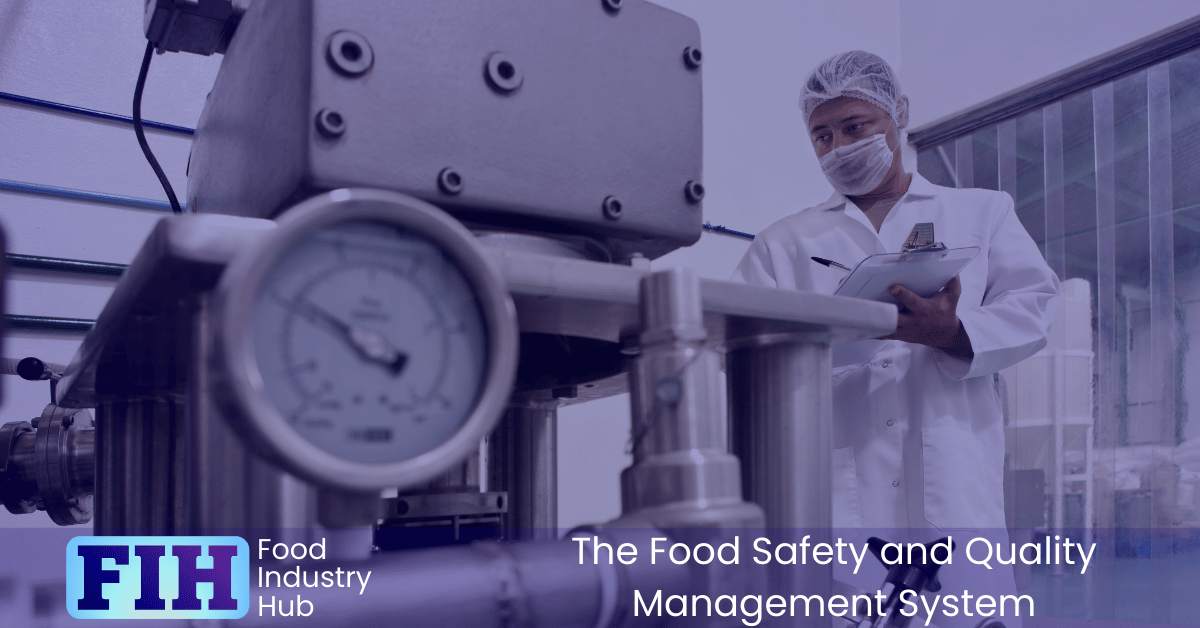
Sign-up for the Food Industry Hub Mail Service
We regularly produce new content for food industry professionals, and the Food Industry Hub Mail Service is the best way to stay up to date with the latest additions.
Signup today to be added to the Food Industry Hub mailing list.
Internal Audits
While some people might view them as a chore, internal audits are a key aspect of your food safety and quality management system. They’re not just about ticking boxes or meeting regulatory requirements, they’re an opportunity for you to dig deep into your operations and identify areas for improvement.
You’ll use internal audits to evaluate your processes, check compliance with standards, and verify the effectiveness of corrective actions. You’ll look at the documentation, observe the operations, and interview the staff. The aim is to gather evidence about the performance of your system.
Don’t fear the audit findings, embrace them. They’re valuable insights that can help improve your system. Remember, the goal isn’t to catch out mistakes but to identify opportunities for improvement.
You need to show that your company effectively applies the food safety plan and meets the site’s food safety and quality management system requirements.
This involves a scheduled program of internal audits, with at least four different audit dates spread throughout the year.
You must audit all activities that form part of the site’s food safety and quality systems at least once each year, considering the risks and previous audit performance.
There Must Be a Scheduled Programme of Internal Audits
Your company should have a scheduled programme of internal audits.
Don’t think of it as a chore but an opportunity to identify areas of improvement. Internal audits provide a means for you to verify the effective application of your food safety plan.
They’re a tool to confirm that the requirements of your site’s food safety and quality management system are being implemented correctly. With a scheduled programme, you’re not leaving anything to chance.
You’ve got a system in place to regularly check your processes and ensure they’re up to par. But it’s not enough to merely have these audits. They must be thorough and comprehensive. You need to examine every aspect of your food safety and quality management system. You’ve got to delve into the details, not just skim the surface. When you’re thorough, you’ll catch any potential issues before they become a problem.
At A Minimum, The Programme Must Include At Least Four Different Audit Dates Spread Throughout the Year
You need to have at least four distinct audit dates, evenly distributed over the year. This isn’t arbitrary; it’s about ensuring you’re constantly verifying your food safety plan’s effectiveness and your food safety and quality management system’s implementation.
Don’t make the mistake of bundling all audits at year’s end or the beginning. It’s imperative to maintain a steady check on systems throughout the year to catch potential issues. If you’re only auditing once or twice a year, you could be letting problems fester unnoticed. This could lead to bigger issues down the line, like product recalls or, worse, foodborne illnesses.
Remember, the goal isn’t to pass an audit; it’s to ensure food safety and quality consistently. Regular audits help you achieve this by providing ongoing checks and balances.
So, plan your audit dates wisely, spread them out, and make sure you’re not just going through the motions but actively verifying the effectiveness of your food safety plan and system.
The Frequency at Which Each Activity Is Audited Must Be Established in Relation to The Risks Associated with The Activity and Previous Audit Performance
Establishing the frequency of auditing each activity should be driven by the risks associated with that activity and its previous audit performance. It’s not merely about ticking off a checklist; it’s about vigilance and constant evaluation.
You must gauge the risk level of each activity. High-risk activities should be audited more frequently. But don’t forget to factor in the previous audit performance. If an activity has consistently shown compliance and maintained high standards, you might decide to lessen the frequency of its audits.
Remember, the goal is to ensure the effective application of your food safety plan and the implementation of your site’s food safety and quality management system. You have to demonstrate that you’re not just going through the motions. Your audits must be meaningful and effective. They should highlight any gaps or weaknesses, allowing you to take corrective actions promptly.
The frequency of your audits isn’t set in stone. It should be fluid, adapting to changes in risk levels and audit performance. This flexibility ensures your food safety and quality management system remains robust and effective.
It’s about quality, not quantity. Every audit counts. Be smart about it.
All Activities That Form a Part of The Site’s Food Safety and Quality Systems Must Be Covered At Least Once Each Year
Every activity within your site’s food safety and quality systems – those tied to food safety, authenticity, legality, and quality – must be examined at least once annually.
It doesn’t matter how small or insignificant the activity may seem, it’s critical to include it in your review process.
You’re required to demonstrate that you’re effectively applying your food safety plan and that you’re meeting the requirements of your site’s food safety and quality management system.
Remember, it’s all about verification. You can’t just say you’re doing things right; you have to prove it.
The Scope of The Internal Audit Programme
You need to ensure that your internal audit programme covers all necessary areas.
This includes the food safety plan, prerequisite programmes like hygiene and pest management, and food defence and fraud prevention plans.
Don’t forget to review the systems and procedures that form your site’s quality management system.
To ensure the utmost food safety, your internal audit programme must encompass the Hazard Analysis and Critical Control Point (HACCP) or food safety plan, along with the necessary activities to put it into motion.
You’ll need to verify supplier approval, initiate corrective actions, and ensure implementation. This demonstrates the effectiveness of your food safety plan, fulfilling the site’s food safety and quality management requirements.
While ensuring the effectiveness of your food safety plan, don’t overlook the importance of including prerequisite programmes such as hygiene and pest management in your internal audit. You must demonstrate that your site’s food safety and quality management system effectively applies these programmes.
Building on the theme of comprehensive auditing, it’s equally important to incorporate food defence and food fraud prevention plans into your internal audit programme.
Ensuring the scope of your internal audit programme includes systems and procedures that form your site’s quality management system is a critical part of maintaining food safety.
This requires verifying the effective application of your food safety plan, and the implementation of your site’s food safety and quality management system.
Each Internal Audit Within the Programme Must Have a Defined Scope and Consider a Specific
Each internal audit within your programme must have a defined scope and consider a specific area of your operation. It’s not enough to just have an audit; it must be targeted and precise.
Remember, every aspect of the site’s food safety and quality management system is under your purview. The audits you conduct should cover all these areas, from ingredient sourcing to final product packaging.
It’s your responsibility to demonstrate that your company verifies the efficacy of your food safety plan. Your audits should compile evidence, pinpoint problem areas, and suggest corrective actions.
Think of your audits as a way to continually improve your system. With every audit, you’re taking a step towards a safer, higher quality product for your customers.
Internal Audits Must Be Carried Out by Appropriately Trained, Competent Auditors
Having appropriately trained, competent auditors conduct your internal audits is non-negotiable. Their expertise ensures the effective application of your food safety plan and the comprehensive implementation of your site’s food safety and quality management system.
Now, it’s not just about having any auditor. You must have auditors who are well-trained and competent in food safety and quality management. They’ll have the technical know-how to assess your system effectively. They’ll identify areas that are working well and highlight those that need improvement.
They’ll provide you with a clear, unbiased view of your system’s performance, letting you know if you’re meeting the necessary standards.
You also need to ensure they’re up to date with the latest food safety and quality standards. They must be able to adapt to any changes in the regulatory landscape. This keeps your system current and compliant, reducing the risk of non-compliance.
Auditors Must Be Independent
It’s essential to have your auditors operate independently because an independent auditor provides an unbiased review of your food safety system. They’re not auditing their own work, so they can objectively assess if your safety plan is effectively applied and if the requirements of your site’s food safety and quality management system are fully implemented.
There’s a clear need for independence in this role. If auditors review their own work, they might overlook errors or fail to identify areas for improvement due to familiarity bias.
It’s human nature to be less critical of our own work, after all.
As a company, you must show that you’re actively verifying the effective application of your food safety plan.
An independent auditor can help you do just that. They can pinpoint potential issues, ensuring that your system meets the highest standards for food safety and quality management.
The Internal Audit Programme Must Be Fully Implemented
Every single element of your internal audit programme plays a pivotal role in ensuring that your food safety plan is effectively applied. It’s not just about having a plan in place, it’s also about making sure it’s fully implemented.
Remember, you’re required to demonstrate that you verify the effective application of your food safety plan, and the implementation of the requirements of your site’s food safety and quality management system.
Internal Audit Reports Must Identify Conformity as Well as Non-Conformity and Include Objective Evidence of the findings
When it comes to internal audit reports, it’s crucial to identify both conformity and non-conformity.
These reports aren’t just bureaucratic paperwork; they’re tools for continuous improvement. They help you verify the effective application of your food safety plan, along with the implementation of your site’s food safety and quality management system requirements.
The identification of conformity shows what’s working, providing a benchmark for future audits. It reassures you that your procedures are maintaining food safety and quality standards.
On the other hand, highlighting non-conformity isn’t about pointing fingers. It’s about finding gaps in your system and addressing them promptly.
The Results Must Be Reported to The Personnel Responsible for The Activity Audited
Reporting the audit results to the personnel responsible for the audited activity is the next significant step. This isn’t just a formality – it’s a crucial part of the food safety and quality management system.
When you’re in charge of this, you hold a key role in ensuring your company’s compliance with food safety standards. You don’t just hand over a report and call it a day. No, you’re responsible for making sure the findings are understood.
It’s your job to clarify any points of confusion and answer any questions. You need to make sure they know what went right, what went wrong, and most importantly, how to maintain the standards or rectify any issues.
Remember, this isn’t about placing blame. It’s about creating a safer, better product. It’s about learning and improving. So, deliver the news in a constructive, supportive manner. Encourage dialogue and be open to feedback.
You’re not just reporting results – you’re helping your team grow, and you’re ensuring the health and safety of the consumers who trust your product. So, take this responsibility seriously and do it right. It’s not just a requirement – it’s a duty.
Corrective And Preventive Actions, And Timescales for Their Implementation, Must Be Agreed and Their Completion Verified
Why wait for a food safety issue to occur when you can prevent it? That’s the principle behind the corrective and preventive actions section of your food safety and quality management system. You’re not just reacting to problems, but proactively preventing them.
You need to set up a system for identifying potential hazards, deciding on the actions needed to prevent or correct them, and setting realistic timescales for implementing these actions.
But it’s not enough to just have a plan. You’ve got to show that it’s working. That’s where verification comes in.
You’re required to demonstrate that your food safety plan is effectively applied, and the requirements of your site’s food safety and quality management system are being met. This isn’t a one-time thing, it’s ongoing.
You’ll be continuously monitoring, verifying, and adjusting your plan as necessary. Remember, a good plan today is better than a perfect plan tomorrow.
A Summary of The Results Must Be Reviewed in Management Review Meetings
Regular management review meetings are an essential factor in maintaining standards. These strategic gatherings provide an opportunity for you to review and evaluate the effectiveness of your food safety plan.
The systematic review of your food safety plan’s results is a critical step in ensuring you’re meeting the required safety and quality standards.
Imagine running a marathon without ever checking your pace or progress. You wouldn’t know if you’re on track, need to speed up, or slow down.
It’s the same with your food safety plan. You can’t just set it and forget it. You need to regularly review the results, identify any gaps, and take corrective actions if necessary.
There Must Be a Separate Programme of Documented Inspections to Ensure That the Factory Environment and Processing Equipment Are Maintained in A Suitable Condition
In addition to your internal audit program, you must establish a separate, documented inspection program to keep your factory environment and processing equipment in a food-production-ready state.
This includes regular hygiene inspections to measure cleaning and housekeeping performance.
Also, don’t forget to conduct fabrication inspections, including doors, walls, and equipment, to spot any risks to the product from your building or equipment.
Regular inspections ensure a suitable production environment.
Beyond the scope of hygiene, your company’s regular inspections should also encompass fabrication inspections.
This includes looking at doors, walls, facilities, and equipment to identify any potential risks to the product.
It’s essential to ensure that everything’s maintained in a suitable condition for food production.
Your company must be able to demonstrate the effective application of the food safety plan.
Every organisation involved in food production should take note: inspections are a non-negotiable part of maintaining food safety and quality. You can’t cut corners or put them off. They’re vital in identifying risks and ensuring the effective application of your food safety plan.
Don’t think you can get by with random, sporadic inspections. The frequency of these inspections must be based on risk and any changes that could affect food safety. That means you’re not just inspecting for the sake of it; you’re responding to the specific needs and risks of your operation.
But don’t let that lull you into complacency. You’re required to carry out these inspections no less than once per month in open product areas.
You must also demonstrate that you’re effectively implementing the requirements of your site’s food safety and quality management system. It’s not enough to have a plan; you’ve got to show that you’re following through.
You’re accountable for the food your organisation produces, and regular inspections are an integral part of that responsibility.
The Results Must Be Reported to The Personnel Responsible for The Activity or Area Being Assessed
When it comes to reporting inspection results, you’re not merely conveying a set of data; you’re ensuring the safety and quality of the food products. You’re the bridge between the inspection process and the implementation of changes needed to uphold safety standards.
Upon completion of inspections, it’s your responsibility to report the findings promptly and accurately to the team. It’s not just about pointing out deficiencies. You’re also recognising areas where the food safety plan is working effectively. This feedback enables the team to understand the strengths and shortcomings of their operations.
Remember, transparency is key. Don’t shy away from sharing negative results. Instead, present them as opportunities for improvement. It’s necessary to communicate the findings clearly, highlighting the areas where the food safety plan needs more focus.
The company must demonstrate compliance with the food safety and quality management system. Your reports are vital evidence of this compliance, and they showcase the company’s commitment to food safety.
Corrective Actions, And Timescales for Their Implementation, Must Be Agreed and Their Completion Verified
One of the most important steps is agreeing on corrective actions and setting a timeline for their completion. As someone involved in this process, you must understand it’s not just about identifying issues, but also about implementing solutions, monitoring them, and verifying their effectiveness.
You’ll need to ensure that the corrective actions agreed upon align with your site’s food safety and quality management system. Don’t skimp on this, because it’s critical to demonstrate that your food safety plan isn’t only in place but also effectively applied.
You should also set realistic timescales for these actions. These aren’t arbitrary dates but are based on the severity of the issue, the resources available, and the potential risk to food safety if the action isn’t completed on time. Remember, it’s about quality, not speed.
Once the actions are implemented, you can’t just tick off a box and move on. You need to verify their completion, ensuring they’ve achieved the desired outcome.
A Summary of The Results Must Be Reviewed in The Management Review Meetings
Management review meetings serve a crucial role in your food safety and quality management system. It’s not just a routine gathering; it’s an opportunity to closely examine the efficiency of your food safety plan and the adherence to the system’s requirements.
In these meetings, you’re obliged to review a summary of results. This isn’t a mere formality, but a necessity. You should be able to confidently demonstrate your company’s commitment to maintaining the highest food safety standards.
The results summary provides a snapshot of the overall performance of your system. It’s a tool for identifying areas of improvement and success. You can’t afford to overlook this critical step in your management review meetings.
Remember, it’s not about going through the motions, but actively participating in the system’s effectiveness. It’s about taking responsibility for the safety and quality of the food you produce.
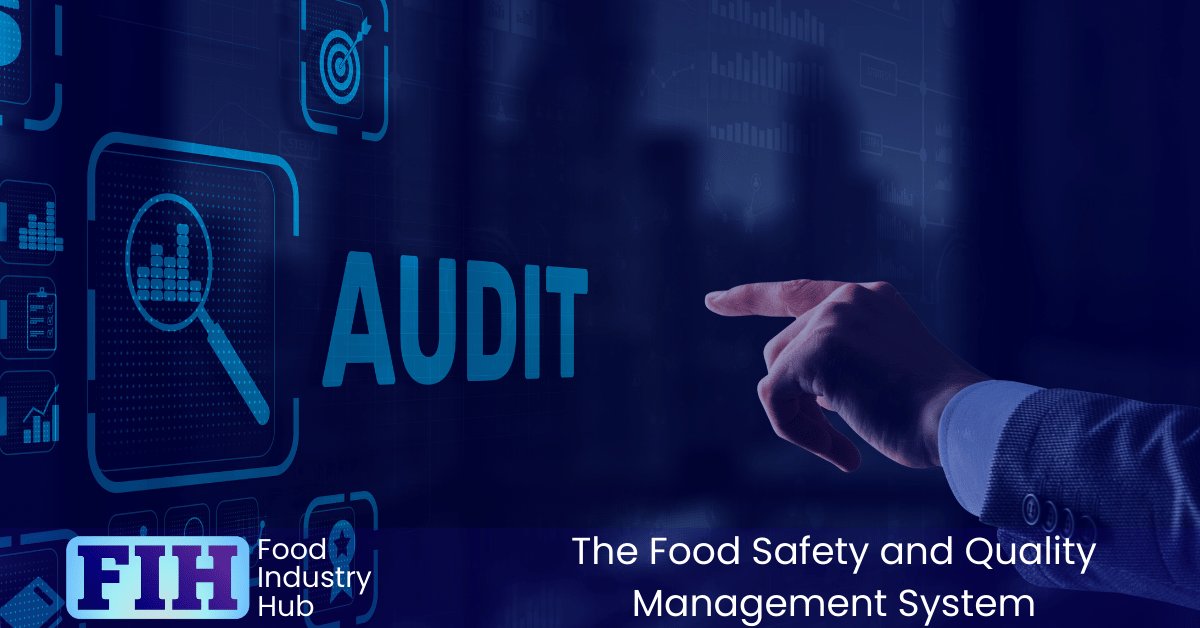
Management Of Suppliers of Raw Materials and Packaging
Managing your suppliers of raw materials and packaging is a crucial aspect of any food safety and quality management system. Your ability to deliver top-notch products hinges largely on the quality of these raw materials. It’s essential that you maintain a strong, transparent relationship with your suppliers. You can’t afford to compromise on this.
Consistency is key. Ensure your suppliers are reliable in delivering high-quality materials on a consistent basis. This doesn’t just support the quality of your final product; it also helps maintain your reputation in the market.
You need to ensure your company has a robust supplier approval and monitoring system. This system helps manage potential risks from raw materials, including primary packaging, to the safety, quality, legality, and authenticity of the final product.
It’s essential to conduct a detailed risk assessment of each raw material or group, as this forms the foundation for raw material acceptance, testing procedures, and supplier approval processes.
The Company Must Have an Effective Supplier Approval and Monitoring System
You’d need a system that thoroughly vets and approves suppliers, ensuring they meet your stringent standards. That’s not all though; you can’t just approve them and forget. It’s essential to keep tabs on your suppliers, monitoring their performance and compliance over time. You’re looking for consistent quality, adherence to safety standards, and legal compliance.
Consider aspects like their sourcing methods, manufacturing practices, and hygiene standards. Are they environmentally responsible? Do they respect workers’ rights? And of course, are their products of the highest quality? You’ve got to check and keep checking.
Remember, it’s not just about the raw materials. The primary packaging is part of the equation too. It must meet safety and quality standards, because it’s in direct contact with your product.
In essence, you must have a robust supplier approval and monitoring system. Without it, you’re leaving your product’s safety and quality to chance, and that’s a risk you can’t afford.
The Company Must Undertake a Documented Risk Assessment of Each Raw Material or Group of Raw Materials
You need to conduct a thorough documented risk assessment for each raw material, including the primary packaging, to identify potential risks.
This process should consider possible allergen content, foreign-body risks, microbial and chemical contaminants, and the chance of variety or species cross-contamination.
It’s essential to have a robust supplier approval and monitoring system to ensure that the potential risks are understood and effectively managed.
Understanding the potential for allergens in your food product is a crucial step in ensuring safety and quality.
Therefore, you must assess each raw material and packaging for allergen content and possible contamination.
This helps you comprehend and manage any risks to your product’s safety, legality, and quality.
When it comes to the safety and quality of your final product, it’s also essential to consider the potential for foreign-body risks.
Your supplier approval and monitoring system must effectively identify and manage these risks. Documented risk assessments for each raw material, including primary packaging, are vital. They’ll help ensure product safety, authenticity, legality, and quality.
Just as foreign-body risks can endanger the safety of your final product, so too can microbiological contamination.
You must ensure your supplier approval and monitoring systems are robust.
Don’t overlook the potential risk of chemical contamination in your food safety and quality management system.
It’s crucial to conduct a thorough risk assessment of all raw materials, including primary packaging, to identify potential threats.
Building upon the importance of chemical contamination, another significant aspect of risk assessment in a food safety and quality management system is the potential for variety or species cross-contamination. You must evaluate each raw material for cross-contamination risks. Ensuring suppliers understand and manage these risks helps maintain your product’s safety, authenticity, legality, and quality.
The risk assessment must actively address the potential risk of food fraud associated with raw materials, as this can substantially impact the authenticity of your products.
While understanding and managing the potential for substitution or fraud is important, it’s equally vital to consider any risks associated with raw materials subject to legislative control or customer requirements.
The significance of raw materials to the quality of the final product can’t be underestimated.
Your supplier approval and monitoring systems should be effective, ensuring all potential risks are understood and managed.
The Risk Assessment Must Form the Basis for The Raw Material Acceptance the Processes for Supplier Approval and Monitoring
Even though it might seem like a complex process, establishing a risk assessment as the backbone of your raw material acceptance and testing procedure can be straightforward.
Use risk assessment to evaluate suppliers based on their ability to provide safe and quality raw materials.
Monitor their performance regularly to ensure consistency.
Updates To the Risk Assessment
As you manage your food safety and quality control systems, it’s essential to keep your risk assessments up to date. Changes in raw materials, processing, or suppliers demand an immediate review of your assessments.
In assessing risks for raw materials, it’s crucial to stay updated.
Whenever there’s a change in the raw material, its processing, or its supplier, you must revisit your risk assessment.
Your supplier approval and monitoring system plays a vital role here.
Ensuring the safety, authenticity, legality, and quality of the final product depends on understanding and managing these potential risks.
You need to be prepared to update your risk assessment for a raw material when a new risk emerges.
It’s not just about reacting, but proactively managing any potential threats.
Recognise the danger, reassess the situation, and refine your approach.
It’s your duty to guarantee the safety, authenticity, legality, and quality of the final product.
Product recalls or withdrawals due to a specific raw material pose a significant threat to your business.
You must promptly update your risk assessment, identifying and managing potential risks of the implicated raw material.
This involves reevaluating your supplier approval and monitoring system to ensure the safety, authenticity, legality, and quality of your final product.
Don’t underestimate the importance of this step.
Keeping your risk assessment for raw materials up to date isn’t just good practice, it’s essential. At least every three years, you must revisit this assessment, ensuring potential risks are understood and managed efficiently. This includes reviewing supplier approval and monitoring systems.
The Company Must Have a Documented Supplier Approval Procedure
To ensure the safety, authenticity, legality, and quality of the final product, your company needs a well-documented supplier approval procedure. Your suppliers are part of your production chain, and their performance directly impacts your final product.
Think about it this way; every supplier is a potential risk point. If they’re not managing their own risks effectively, you’re the one who’ll pay the price. That’s why you need to be sure they’re doing their part.
Your supplier approval procedure should include a complete assessment of each supplier’s ability to manage risks to raw material quality and safety.
Your suppliers must also have effective traceability processes in place. If something goes wrong, you need to be able to trace the problem back to its source quickly and accurately. This allows you to address issues promptly and minimise potential damage.
The Approval Procedure Must Be Based on Risk
You’ll need to base your approval procedure on risk, and it should include either a valid certification to a GFSI benchmarked standard, supplier audits, or questionnaires.
If you’re relying on supplier audits, ensure they encompass product safety, traceability, HACCP review, the product security, food defence plan, the product authenticity plan, and good manufacturing practices.
The scope of audits needs to be appropriate. You must include product safety, traceability, HACCP review, product security, food defence plan, product authenticity plan and good manufacturing practices.
This comprehensive approach ensures you understand and manage any potential risks from raw materials to the final product.
Moving on from supplier audits, let’s not forget about the role of a completed supplier questionnaire in initial approval. Remember, questionnaires should only be used when a valid risk-based justification is provided, and the supplier is deemed low risk.
This ensures potential risks from raw materials are understood and managed, safeguarding the safety, authenticity, legality and quality of the final product.
There Must Be a Documented Process for Ongoing Supplier Performance Review
While managing your company, ensuring a documented process for ongoing supplier performance review is not just about checking boxes or meeting the minimum requirements. It’s about protecting your brand, your reputation, and your customers.
You’ve got to have a system for supplier approval and monitoring, one that fully understands and manages potential risks. These risks might come from raw materials, even primary packaging. They might jeopardise safety, authenticity, legality, or quality of the final product.
Your process must be risk-based and defined by performance criteria. It’s not about who you like best or who gives you the best price. It’s about performance. It’s about delivering quality consistently and meeting your standards every time.
You’ve got to fully implement this process. It can’t be a policy that sits on a shelf. It’s got to be part of your daily operations.
Where Approval Is Based on Questionnaires, These Must Be Reissued At Least Every 3 Years
You may find questionnaires a valuable tool, yet it’s not a one-and-done process. You must reissue these questionnaires at least every three years. Yes, it’s mandatory, but it’s also a smart move to maintain food safety and quality standards.
But it’s not just about you doing the checking. You’ve got to make sure your suppliers are playing their part too. They must notify you of any significant changes that occur between questionnaire cycles. It’s not an optional extra—it’s an absolute necessity.
Remember, you’re not just managing a supplier. You’re managing potential risks – from raw materials to primary packaging. Anything that could impact the safety, authenticity, legality, and quality of your final product.
The Site Must Have an Up-To-Date List or Database of Approved Suppliers
Keeping track of your suppliers is crucial in the food safety and quality management system. It’s not enough to just know who your suppliers are, you need an up-to-date list or database. This can be a hard copy or controlled on an electronic system. Having this information at your fingertips ensures you’re dealing with approved suppliers who meet the necessary safety, authenticity, legality, and quality standards.
An effective supplier approval and monitoring system is vital. This system will let you understand and manage any potential risks from raw materials, including primary packaging. Remember, these risks can impact the safety and quality of your final product. Don’t underestimate the importance of this.
To make it easier, consider using technology. Electronic systems like Food Industry Hub Management Systems can make updating and accessing your supplier list more efficient. This way, you can quickly identify and address any issues that may arise.
The List of Approved Suppliers Must Be Readily Available to The Relevant Staff
Not only should your supplier list be up to date, but it also needs to be easily accessible to key staff.
It’s not just about having a list of approved suppliers. It’s about making sure that list is readily available when it’s needed, like at goods receipt. This accessibility ensures that your team can quickly verify the authenticity and legality of raw materials upon their arrival.
Having an effective supplier approval and monitoring system is a must. It’s your first line of defence in managing potential risks to the safety, quality, and legality of your final product. This system shouldn’t just be a list or database. It should be a living, breathing part of your operation that’s actively managed and updated.
The Site Must Know the Identity of The Last Manufacturer or Packer, or for Bulk Commodity Products the Consolidation Place of The Raw Material
When you’re sourcing raw materials from companies other than the original manufacturer or packer, it’s crucial to know their identity.
This can be done by acquiring information from the agent, broker, or directly from the supplier.
It’s crucial for you to obtain vital information for approving a manufacturer, packer, or consolidator. This info can come from an agent, broker, or directly from the supplier.
However, if the agent or broker is certified to a GFSI benchmarked standard, they’re good to go. This ensures you understand and manage potential risks, ensuring the safety and quality of your final product.
The Company Must Ensure That Its Suppliers of Raw Materials Have an Effective Traceability System
Your company must take necessary steps to ensure suppliers of raw materials, including primary packaging, have a robust traceability system in place. This system is crucial to understanding and mitigating any potential risks to the safety, authenticity, legality, and quality of your final product.
You must actively monitor and approve your suppliers based on their traceability systems. This doesn’t mean merely checking if they’ve a system in place, but assessing the effectiveness of their system. Scrutinise their capabilities to track their products from their origin through the supply chain to your company.
Can they swiftly and accurately identify their products at any stage of distribution? Can they provide precise information about their products during any potential recall situations?
If a supplier can’t meet these standards, it’s a red flag. You can’t afford to compromise your product’s integrity, your company’s reputation, or consumer trust.
Ultimately, the onus is on you to set high standards for your suppliers and take responsibility for ensuring they’re met. Your company’s success depends on your ability to manage these essential aspects of food safety and quality.
Where a Supplier Has Been Approved Based on a Questionnaire, Verification of the Supplier’s Traceability System Must Be Carried Out
Your supplier approval process may sometimes rely on a questionnaire rather than an audit or certification. With questionnaires being a less rigorous method of approval, it’s essential to verify the supplier’s traceability system.
On first approval, make sure you scrutinise their system thoroughly. Don’t just take it for granted.
After that initial approval, it’s not a case of ‘set it and forget it’. You must revisit and reevaluate their traceability system at least every three years. This periodic verification helps you stay alert to any potential changes or lapses that could compromise the safety, authenticity, legality, and quality of your final product.
Remember, it’s your responsibility to understand and manage any potential risks from raw materials, including primary packaging. Suppliers are your partners, but you can’t afford to blindly trust them.
You’ve got to be proactive in ensuring their systems meet your standards.
While questionnaires can provide initial insight, it’s the ongoing verification that really counts. It’s your safeguard against potential risks, a way to ensure your food safety and quality management system remains solid and secure.
Verification Of the Traceability System Must Be Carried Out on The Last Manufacturer, Packer or Consolidator of The Raw Material
When dealing with a supplier who isn’t the original manufacturer, packer, or consolidator of the raw material, your diligence must go a step further.
The verification of the traceability system doesn’t just apply to the supplier, but also to the last entity who handled the raw material. This might be a broker, an agent, or a wholesaler.
Don’t just base approval on a questionnaire. It’s crucial to ensure the safety, authenticity, legality and quality of the final product.
You’ve got to do your due diligence and verify their traceability system. This means tracking the raw material back to its last point of consolidation. It’s a step you can’t afford to skip.
The Site’s Supplier Approval and Performance Monitoring Procedures Must Define the Actions Required for Exception Handling
Managing supplier approval and performance monitoring procedures requires an additional layer of attention. You’ve got to be ready to act if exceptions to the supplier approval process occur. For instance, when raw material suppliers are dictated by a customer, you must have specific actions ready to kick in.
Your plan must ensure the safety, authenticity, legality, and quality of the final product. You’re dealing with potential risks from raw materials and even primary packaging. It’s crucial to have a comprehensive understanding of these risks to manage them efficiently.
Don’t neglect monitoring supplier performance. Keep a watchful eye on any changes or issues that may impact product quality. If a supplier isn’t meeting expectations, you’ll need to address this promptly. Remember, it’s your responsibility to ensure the product’s safety and quality.
Your system for approval and monitoring should be robust and effective. It’s not just about ticking boxes, it’s about safeguarding your company’s reputation and, most importantly, consumer safety.
Sometimes, obtaining the necessary information for effective supplier approval mightn’t be possible.
But don’t let this setback discourage you. It’s crucial to have protocols that define the actions required in such situations, especially when dealing with bulk agricultural commodity products.
Your company’s safety, authenticity, legality, and quality of the final product might be at stake if risks from raw materials aren’t managed well.
That’s why you need an effective supplier approval and monitoring system.
If you can’t get the required information for supplier approval, you won’t be able to evaluate potential risks effectively.
No matter the uncertainties in supplier approval or the challenges in performance monitoring, one thing remains crystal clear – the undeniable value of product testing.
You see, it’s your line of defence against potential risks to the safety, authenticity, legality, and quality of your product. It’s essential that you’re not just relying on supplier assurances or monitoring results.
Product testing verifies what’s coming in, what’s being used, and what’s going out. It’s a check and balance, an added layer of protection for your consumers and your brand. You can’t afford to skip this step, not if you want confidence in the quality and safety of your products.
For Customer-Branded Products, The Customer Must Be Made Aware of Any Relevant Exceptions to The Supplier Approval and Performance Monitoring Procedures
When it comes to producing customer-branded products, there’s an additional layer of responsibility. You can’t just focus on the production process.
You’re also tasked with keeping your customer in the loop, particularly when it comes to supplier approval and performance monitoring procedures.
Let’s say there’s an exception to one of these procedures. Maybe a supplier didn’t meet all the approval criteria, but you’ve decided to use them anyway due to their unique product offering.
It’s crucial that you inform your customer of this exception. They’ve a right to know who’s providing the raw materials for their branded products.
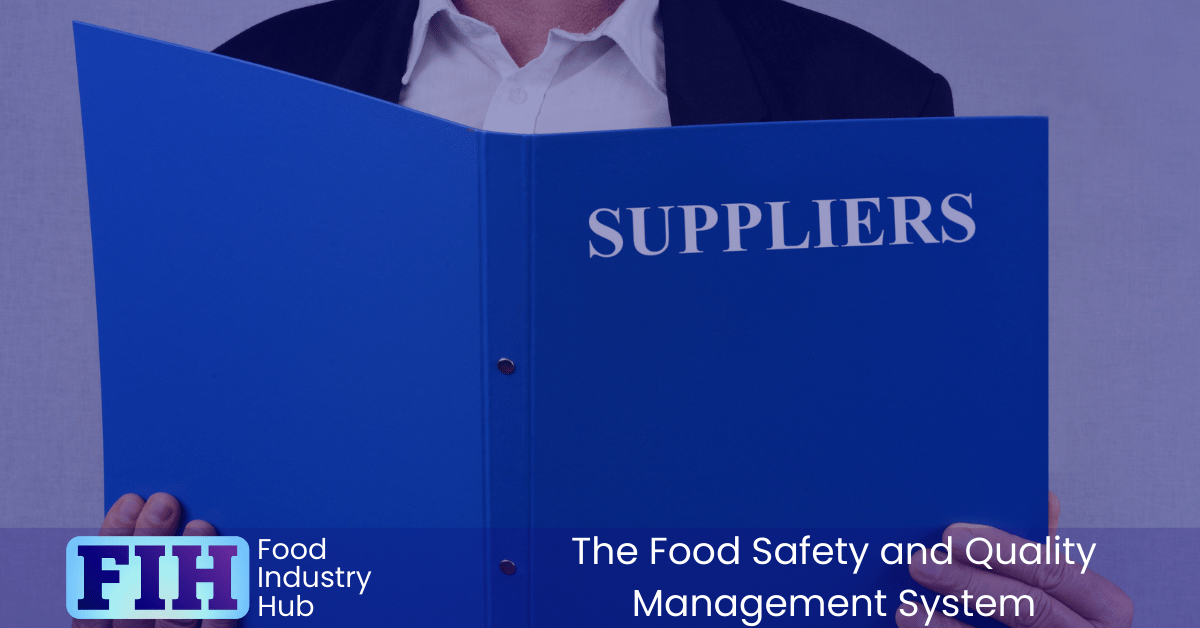
Raw Material and Packaging Acceptance, Monitoring and Management Procedures
It’s essential to understand the importance of proper handling when it comes to raw material and packaging acceptance. This facet of the food safety and quality management system is crucial to ensuring the integrity of your products.
As a business owner or manager, you have to establish clear procedures for accepting, monitoring, and managing raw materials and packaging. These steps should be in line with food safety regulations and industry standards. Why? Because mishandling can lead to contamination, which isn’t just a health risk, but also a potential business disaster.
You’ll need to monitor your raw materials and packaging regularly. This means conducting quality checks and inspections. Remember, it’s not just about accepting materials; it’s also about tracking their use and storage. This process helps to maintain quality and prevent waste.
Managing these materials includes proper storage, rotation, and disposal. It’s vital to ensure that they’re stored under conditions that prevent spoilage or contamination. Rotation prevents old stock from being forgotten, while proper disposal avoids health hazards.
Implementing these procedures isn’t just about regulation. It’s about safeguarding your product, your business, and most importantly, your consumers.
Controls On the Acceptance of Raw Materials Must Ensure That They Do Not Compromise the Safety, Legality or Quality of Products
To maintain the integrity of your products, you must implement stringent controls on the acceptance of raw materials, including primary packaging. If you don’t, the safety, legality, and quality of your products could be compromised.
Think about it this way: raw materials and primary packaging form the bedrock of your products. If they’re not up to par, everything that’s built on them could crumble. That means you could end up with unsafe products, legal issues, and a damaged reputation.
Not to mention the potential loss of authenticity claims, which could hurt your brand’s credibility and customer trust.
You’ve got to be rigorous in assessing the quality of these inputs. Ensure they meet all safety and legal requirements, and align with the quality standards you’ve set.
The Company Must Have a Procedure for The Acceptance of Raw Materials and Primary Packaging on Receipt
Your company must have a clear procedure for accepting raw materials and primary packaging upon receipt.
This procedure should outline the need for product sampling, testing, and visual inspections.
Additionally, it’s prudent to incorporate the use of certificates of analysis and conformance, clearly defining parameters for acceptance and testing frequency.
The Procedure Should Consider the Requirement for Product Sampling and Testing
Having a solid procedure for the acceptance of raw materials and primary packaging is crucial for your company. It’s not just about receiving the goods and storing them.
You need to go a step further – it’s about sampling and testing them. This procedure ensures that whatever enters your production line aligns with your company’s quality standards.
You have to consider the sampling and testing requirements before accepting any raw material or primary packaging. It’s not a step you can afford to skip, as it could be the difference between a top-quality end product and a substandard one.
Imagine getting a batch of raw materials that’s not up to par. Without proper testing, you wouldn’t know until it’s too late. That’s a risk you can’t take, and it’s why sampling is important.
For higher risk materials, you’ll need to test a sample of every batch that arrives. If the sample passes your quality standards, you can accept the batch. If not, it’s better to reject it right away.
The Procedure Should Consider the Requirement for Visual Inspection on Receipt
Despite the sophistication of your testing procedures, never underestimate the power of a simple visual inspection upon receiving raw materials and primary packaging.
It’s your first line of defence, a critical step in maintaining the integrity of your food safety and quality management system.
Look for signs of damage or contamination. Check for any tears, punctures, or breaks.
You also need to ensure that the materials are stored properly and kept at the right temperature. This isn’t just about meeting regulations; it’s about guaranteeing the safety and quality of your products.
Visual inspection is an opportunity to prevent potential issues down the line.
It’s far easier to reject a shipment on arrival than to recall products later.
Ensure your team is trained to perform these inspections and understand their importance.
The Procedure Should Consider the Requirement for Certificates of Analysis
Building on the importance of visual inspection, let’s explore another key aspect of raw material and primary packaging acceptance – the certificate of analysis. This certificate isn’t just a piece of paper; it’s a crucial document that verifies the quality and safety of the materials you’re accepting.
It gives you detailed information about the material’s characteristics, ensuring it meets all necessary standards.
Now, you’re probably wondering, ‘What should I look out for in these certificates?’ Well, it’s essential to confirm the analysis is specific to the consignment you’ve received. That means each batch of materials should have its own certificate, not a generic one.
Also, check if the certificate includes all required testing parameters and results listed on the raw material specification. If it doesn’t, that’s a red flag.
The Procedure for The Acceptance of Raw Materials and Primary Packaging Should Consider the Requirement for Certificates of Conformance
Often, along with the certificate of analysis, you’ll need to check for certificates of conformance when accepting raw materials and primary packaging. These certificates are useful because they validate that the products meet the required specifications and standards. They’re the supplier’s assurance that their product complies with the outlined criteria.
It’s good to have a detailed procedure for receiving and evaluating these certificates. Don’t think it’s just a paperwork exercise. It’s about ensuring the safety and quality of your end product. It’s about protecting your brand and your customers.
In every batch, you should verify the certificate’s authenticity and check the key data against your requirements. Don’t assume every certificate is error-free. Mistakes can happen. It’s your responsibility to catch them.
Moreover, you should keep a record of these certificates. They’re not just for immediate use. In case of a product recall or a customer complaint, you’ll need them for traceability and investigation purposes.
The List of Raw Materials and The Requirements to Be Met for Acceptance Must Be Available at The Point of Use
You need a comprehensive list of raw materials, including primary packaging, along with their acceptance requirements.
Each item on this list should have clearly defined acceptance requirements.
These requirements are your safety net. They ensure that you’re getting exactly what you need and nothing less. Quality shouldn’t be an afterthought. It’s the foundation of your product and your brand’s reputation.
Set your parameters for acceptance. These should be as specific as possible. For example, you might specify the acceptable range for moisture content in your grains or the tensile strength for your packaging materials.
Don’t forget to determine the frequency of testing. Regular testing ensures that your materials continue to meet your high standards. This frequency could be every delivery, weekly, monthly, or whatever works best for your operation.
Once you’ve defined your parameters and frequency, make sure they’re implemented and regularly reviewed. Things change, and your requirements may need to adjust over time. Stay proactive, and your quality will never falter.
Approved Changes to Raw Materials Must Be Communicated to Goods Receipt Personnel So That Only the Correct Version of The Raw Material Is Accepted
It’s crucial to have robust procedures in place for communicating any approved changes to raw materials or primary packaging to your goods receipt personnel. This is to ensure that only the correct version of the raw material or packaging is accepted.
For instance, if labels or printed packaging have been updated, only the revised version should be accepted and released into production.
You need to establish a clear protocol that will guide your personnel in recognising and accepting only the approved changes. This might involve marking new versions distinctly, using colour codes or symbols, or providing detailed descriptions of the changes.
Whatever system you implement, it should be intuitive and easily understood by all personnel involved in goods receipt.
Additionally, regular training sessions and updates should be held to keep staff informed about any changes and ensure they’re equipped to enforce these changes correctly.
This way, you ensure that your quality standards remain consistently high and that your production line isn’t compromised by outdated or incorrect raw materials or packaging.
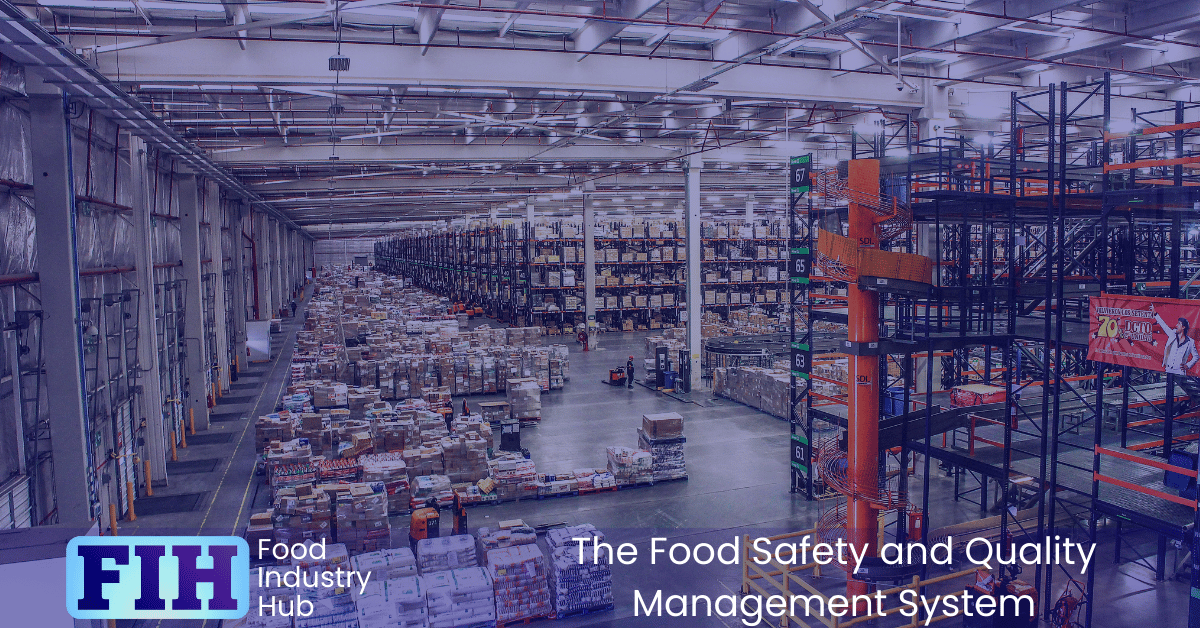
Management Of Suppliers of Services
Service suppliers are integral to maintaining the integrity of your food products and ensuring that they meet the highest standards.
The company must be able to demonstrate that where services are outsourced, the service is appropriate, and any risks presented to food safety, authenticity, legality and quality have been evaluated to ensure effective controls are in place.
When you outsource services, it’s essential to ensure they live up to food safety and quality standards.
You’ve got to evaluate and control any possible risks to food safety, authenticity, legality, and quality.
Therefore, establishing clear contracts with service providers, implementing risk-based approval and monitoring systems, and undertaking regular performance reviews form a crucial part of your overall food safety management strategy.
There Must Be a Procedure for The Approval and Monitoring of Suppliers of Services
When outsourcing services such as pest control, laundry, cleaning, equipment maintenance, and transport, it’s imperative to have an approval and monitoring procedure in place.
You need to ensure that services rendered meet your food safety, authenticity, legality and quality standards.
It’s about assessing risks and implementing effective controls to safeguard your business and customers.
There must be a procedure for the approval and monitoring of suppliers of pest control services. Make sure they’re up to par, minimising risks to food safety, authenticity, legality, and quality. This is really important because pest activity can prevent the safe operation of a food manufacturing business, and there are separate risks (like uncontrolled poisons) that can be introduced if the service is poorly controlled.
Put a solid approval and monitoring procedure in place. It’s your responsibility to ensure the controls are effective.
There must be a procedure for the approval and monitoring of suppliers of laundry services. Just as with pest control services, it’s crucial to have a process in place for approving and monitoring your laundry service suppliers. You need to ensure they’re appropriate, pose no risk to food safety, authenticity, legality, and quality. Evaluating these risks effectively ensures strong controls are in place.
There must be a procedure for the approval and monitoring of suppliers of contracted cleaning services, so that cleaning processes are demonstrably effective, and no risk is introduced.
There must be a procedure for the approval and monitoring of suppliers of contracted servicing and maintenance of equipment. You’ll need to establish a procedure for approving and monitoring suppliers of contracted servicing and maintenance of equipment, and it can often be the case that complex machinery can only be effectively maintained by specialist service providers.
You’ll also need to set up a procedure for approving and monitoring suppliers of transport and distribution services. Assess the quality, legality, and authenticity of these services, putting controls in place to mitigate any risk associated with temperature control, security and access, vehicle breakdowns, and traceability.
The Approval and Monitoring Process Must Be Risk-Based
It’s essential to evaluate if the outsourced services meet safety, authenticity, legality, and quality standards.
Scrutinise any potential risks, including product security, to ensure robust controls are in place.
When outsourcing services, it’s crucial to ensure they’re not just suitable, but also safe.
You must evaluate all potential risks to food safety, authenticity, legality, and quality. This isn’t just about ticking off boxes – it’s about putting effective controls in place.
The approval and monitoring process should be rigorous, risk-based, and robust enough to safeguard your products’ quality and safety.
In light of specific legal requirements, the approval and monitoring process takes on a critical role in safeguarding food safety, authenticity, legality, and quality. You’ll need to demonstrate that outsourced services are suitable, and risks are properly assessed.
Consideration of potential risks to the product’s security also forms a crucial part of the approval and monitoring process.
Contracts or Formal Agreements Must Exist with The Suppliers of Services That Clearly Define Service Expectations
Without a doubt, you must have contracts or formal agreements with your suppliers of services. These documents shouldn’t be generic or vague. They need to clearly define service expectations and address any food safety risks associated with the service.
If you’re outsourcing services, you’re still responsible for the end product. It’s not enough to simply trust your supplier to do the right thing. You’ve got to ensure that the service they’re providing is appropriate and doesn’t pose any threats to food safety, authenticity, legality, or quality.
You should be conducting thorough evaluations of the risks associated with each service. For example, consider potential contamination issues, the supplier’s handling practices, or any part of the process that could compromise the integrity of your product.
Once you’ve identified these risks, establish effective controls to mitigate them.
In essence, managing your suppliers isn’t just about maintaining a good business relationship. It’s about ensuring the safety and quality of your product, and ultimately, protecting your consumers.
There Must Be a Documented Process for Ongoing Performance Review of Suppliers of Services
Moving forward from managing supplier relationships and identifying risks, your next step is to establish a documented process for reviewing the performance of these suppliers. This isn’t a one-off task, it’s an ongoing necessity.
It’s critical to base your reviews on risk and pre-defined performance criteria. You can’t just set up this process and forget about it. It needs to be fully implemented and woven into the fabric of your daily operations. Regular reviews ensure that your suppliers are meeting their commitments and aren’t posing any threat to food safety, authenticity, legality and quality.
When outsourcing services, you can’t just assume they’re up to scratch. You need to demonstrate that the service is appropriate, and any risks have been properly evaluated.
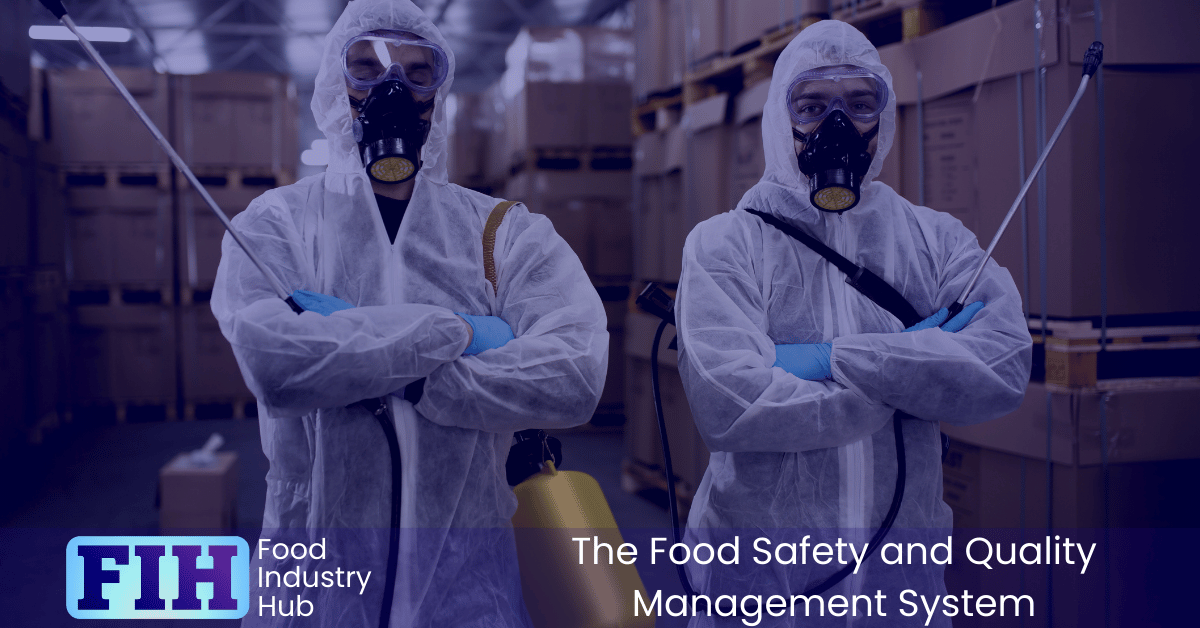
Management Of Outsourced Processing
When you outsource any part of your production process, it’s crucial to manage this to prevent any compromise to product safety, authenticity, legality, or quality.
You’re responsible for disclosing outsourced processes to customers and gaining their approval, if needed.
It’s also important to ensure your outsourced processors are approved, monitored, and that there are robust traceability processes in place.
Where Any Intermediate Process Step in The Manufacture of a Product is Outsourced and Subsequently Returned to The Site, This Must Be Managed Appropriately
When you outsource a step or carry it out at another site, it’s your responsibility to keep a tight rein on things. You can’t just hand over the reins and hope for the best. You’ve got to be involved, monitoring the process, checking the progress, making sure standards are maintained.
If you’re not vigilant, the product that returns to your site could be a far cry from what you intended it to be. Keep in mind, it’s not just about maintaining your product’s quality. It’s also about your business’s reputation.
If your product’s safety or authenticity is compromised, it’s your name on the line. So don’t take outsourced processing lightly. Treat it with the same seriousness and care you’d if the process was happening right under your roof. After all, it’s your product, your responsibility.
Where Part of The Production Process Is Outsourced or Undertaken Off Site, And Subsequently Returned to The Site, This Must Be Declared to The Customer
Transparency is key when it comes to outsourcing any part of your production process. It’s not just about getting the job done, it’s about keeping your customers in the loop. If you’re outsourcing a part of your production process, or moving it off-site, you have a responsibility to declare it to your customers.
Why is this important? It’s all about trust. Your customers trust you to deliver a product that’s safe, high-quality, and consistent. If there’s a change in the way you’re producing your product, they deserve to know.
It’s not just about ethics, it’s about business.
If you’re transparent and can demonstrate that you’re still maintaining the same quality and safety standards, there’s no reason why approval should be denied.
The Company Must Ensure That Outsourced Processors Are Approved and Monitored
Ensuring the safety and quality of your product doesn’t stop with your own processes. You’ve got to extend that commitment to your outsourced processors too. Just as you’d vet an employee, you should make sure your outsourced partners are up to the task. They need to demonstrate a robust ability to manage risks to product safety and quality.
This isn’t a one-time deal, either. You’ve got to keep an eye on them to ensure they’re consistently meeting your standards.
Now, we’re not just talking about the product’s safety and quality. Traceability is key too. You need to know where your product’s been, who’s handled it, and what procedures it’s gone through.
Your outsourced processors should have effective traceability processes in place. If something goes wrong, you need to be able to trace back the problem’s origin. This way, you can address it at the source and prevent future issues.
The Approval and Monitoring Procedure Must Be Based on Risk
When managing outsourced processing, you must base your approval and monitoring procedures on risk.
This can involve ensuring that suppliers hold valid certifications to a GFSI-benchmarked standard, covering all activities completed for your site.
Supplier audits evaluating product safety, traceability, HACCP review, product security, and food defence plan can also play a part, and should be conducted by a competent product safety auditor.
Approval can be based on a valid certification to a GFSI-benchmarked standard. This certification’s scope must cover all activities performed during the outsourced processing. It’s not just about having the certificate; it’s about proving your commitment to food safety through continuous validation and monitoring based on risk.
Where applicable, supplier audits must consider product safety, traceability, HACCP review, product security, and food defence plan. Don’t forget to include the product authenticity plan and good manufacturing practices.
This approach ensures that your outsourced processing is risk-based and upholds the highest standards of food safety and quality management.
In the scope of supplier audits, it’s necessary to ensure that all the outlined plans are integral to the supplier’s product safety management system. You must confirm these plans are implemented as part of their safety measures.
The audit should be conducted by an experienced product safety auditor.
Where this supplier audit is completed by a second or third party, the company must be able to demonstrate the competency of the auditor. You must be able to demonstrate their knowledge, skills, and experience. This is crucial for risk-based approval and monitoring procedures.
When your company relies on external parties for audits, there’s a lot on the line.
You must ensure the audit’s scope encompasses product safety, traceability, HACCP review, product security, food defence plan, product authenticity plan, and good manufacturing practices.
Outsourced processing’s approval and monitoring should be risk-based.
It’s crucial to verify these aspects for your company’s safety and quality management.
If your supplier’s audit is carried out by a second or third party, it’s essential for your company to secure and assess a comprehensive audit report. This report should be part of your risk-based approval and monitoring process.
It’s not just about outsourcing processing, it’s about managing it effectively.
There Must Be a Documented Process for Ongoing Supplier Performance Review
Establishing a documented process for ongoing supplier performance review is crucial, particularly when dealing with outsourced processing. You must develop a comprehensive system based on risk and defined performance criteria. It’s not enough to just design this system – you’ve got to fully implement it, too.
Remember, you’re not only evaluating the supplier’s ability to deliver goods or services, but also their adherence to safety standards, their risk management strategies, and their overall performance. You must establish clear, measurable criteria for these evaluations. Don’t just rely on your gut feelings or subjective judgments – you need solid, objective data.
You’ve also got to keep records of these reviews. They’re not just for your internal use – you may need to provide them to regulatory authorities or third-party auditors. So, make sure you’re keeping detailed, organised records of every review.
But don’t just file them away and forget about them. Use them to identify areas for improvement, to hold suppliers accountable, and to make informed decisions about whether to continue or terminate a relationship with a supplier.
Where Any Processes Are Outsourced, Any Risks Must Form Part of The Site’s Food Safety Plan (HACCP Plan)
Outsourcing processes, whether it’s production, manufacture, processing or storage, can throw up a whole new set of challenges for your food safety plan.
It’s more than just finding a reputable supplier or service provider. It’s about identifying potential risks to your product’s safety, authenticity, and legality that can arise from these outsourced processes.
Consider the journey of your product. From production to the consumer’s table, every step in the process can introduce risks.
It could be a lack of quality control in manufacture, improper storage conditions, or even fraud in the supply chain.
Whatever the risk, it’s crucial that it forms an integral part of your site’s Hazard Analysis Critical Control Point (HACCP) plan.
Requirements For Outsourced Processing Must Be Agreed and Documented in A Service Specification
Setting the requirements for outsourced processing into a clear, documented service specification is a crucial step in your food safety system.
It’s not just about ticking boxes; it’s about ensuring that these requirements are understood and agreed upon by all parties involved.
Think of this processing specification as a road map for your outsourced processes. It guides all the actions taken, just like a finished product specification.
It should include specific handling requirements for the products, ensuring that they’re taken care of every step of the way.
But remember, it’s not enough to just have these requirements on paper. They must be communicated clearly to your outsourcing partner. You’ve got to be sure they understand and can implement them correctly.
It’s also important to review these specifications regularly. Keep an eye on the market, regulatory changes, and your own business needs. This way, you’ll ensure that the requirements are always up-to-date and relevant.
Any Outsourced Processing Operations Must Be Undertaken in Accordance with Established Contracts
Building on the idea of service specification, it’s vital to underscore how crucial well-defined contracts are in the realm of outsourced processing.
You’re not just hiring another company to perform tasks; you’re entrusting them with a critical aspect of your food safety and quality management system. So, it’s essential that these contracts clearly define any processing requirements.
Let’s imagine you’re outsourcing the production of a particular ingredient. The contract must stipulate how to handle, store, and process that ingredient, among other things.
It’s not enough to say, “Make this for us.” You need to specify how it should be made, what standards to follow, and what outcomes to expect. It’s all about creating a shared understanding between you and your outsourcing partner.
Now, you might worry that such a detailed contract might scare off potential partners. Don’t. The right partner understands the importance of clear, specific contracts.
They’ll appreciate your diligence because it reduces misunderstandings and helps ensure the safety and quality of the final product.
Any Outsourced Processing Operations Must Maintain Product Traceability
keeping track of your product every step of the way is non-negotiable. It’s not just about knowing where your product ends up, but also where it’s been. This extends even when you outsource certain processing operations. You can’t afford to lose sight of your products once they leave your direct control.
You must insist that your partners maintain product traceability. They should be able to provide real-time information about the whereabouts and status of your product at any given time. This is important for a couple of reasons. First, it ensures you can monitor quality standards. Second, it allows you to quickly pinpoint any issues that may arise, such as contamination or spoilage.
But how do you ensure this? It’s through clear communication and stringent contracts. Your agreements with outsourced processors must clearly stipulate the need for maintaining product traceability.
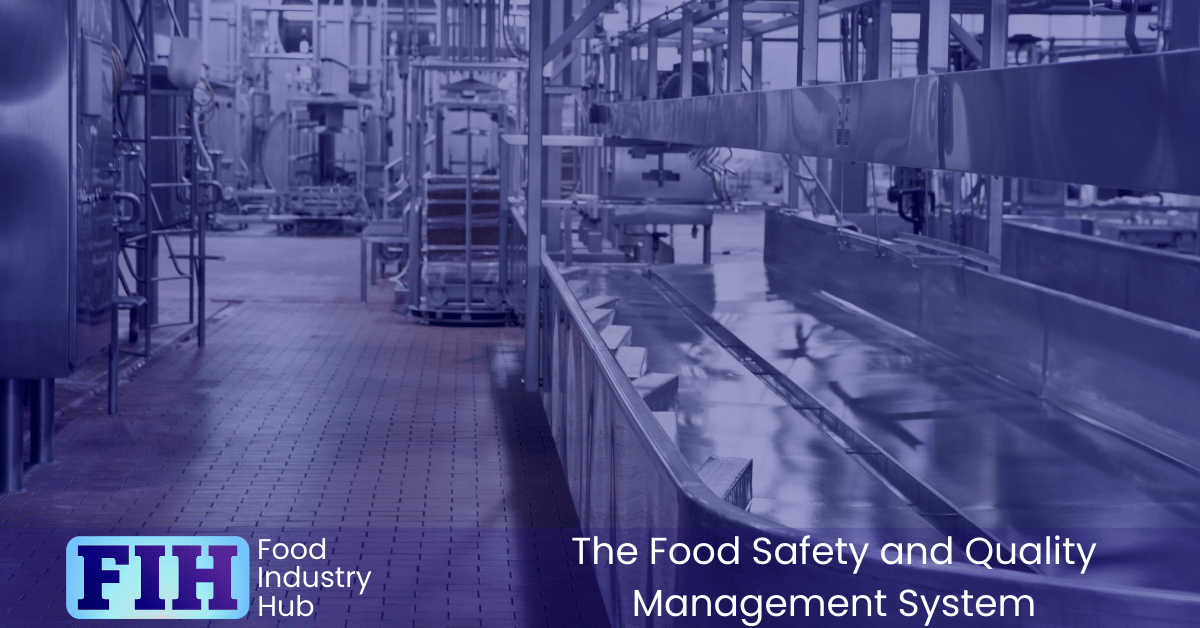
Specifications
Think of specifications as a blueprint for your food products. They lay out the raw materials, ingredients, and processes needed to create a specific product. It’s more than just a list; it’s a detailed guide that ensures everyone is on the same page about what goes into your products.
You’re not just defining what your product is but also what it isn’t. By specifying what isn’t acceptable, you’re setting boundaries that prevent the use of substandard or unsafe ingredients. This reduces the risk of food safety incidents and maintains the integrity of your products.
It’s essential that you have up-to-date specifications for all finished products, be it in print, digital, or part of an online system.
Specifications For Raw Materials and Primary Packaging Must Be Adequate and Accurate
You need to ensure the specifications for your raw materials and primary packaging are both adequate and accurate.
They’re key to maintaining the safety and quality of finished products and must meet all relevant safety and legislative requirements.
The specifications must include defined limits for relevant attributes of the material which may affect the quality or safety of the final products. This means defining limits for attributes that can impact your product’s quality or safety, such as chemical, microbiological, physical or allergen standards.
It’s essential to establish clear specifications for all materials involved in the production process. Don’t forget, these must comply with relevant safety and legislative requirements.
Accurate, Up-To-Date Specifications Must Be Available for All finished Products
Ensuring the availability of accurate, up-to-date specifications for all finished products is a crucial aspect of food safety and quality management.
It’s not just about the finished goods either. You also need to have the right specifications for raw materials and primary packaging. Anything that could potentially impact the integrity of the finished product should be accounted for.
Specifications can come in various forms. You might have them in a printed document, an electronic file, or even as part of an online specification system.
The format isn’t as important as the content. The key is to make sure they’re accurate and current. If they’re outdated or incorrect, they’re not going to do you much good.
Product Specifications Must Include Key Data to Meet Customer and Legal Requirements and Assist the User in The Safe Usage of The Product
Product specifications carry a great deal of importance. These specifications aren’t just random data points; they’re crucial in meeting customer and legal requirements. They’re your guide to ensuring that your product is safe for consumption and use.
You should be aware that these specifications aren’t only for finished products. They’re also necessary for raw materials, including primary packaging. If the specifications for any of these components are off, it could compromise the integrity of your finished product. So, it’s critical to get these specifications right, from the raw materials to the finished product.
Keep in mind, specifications are more than a list of features. They should also include safety information to assist users in safely using the product.
Where The Company Is Manufacturing Customer-Branded Products, It Must Seek Formal Agreement of the finished Product Specifications
When you’re manufacturing customer-branded products, it’s best to secure formal agreement on the finished product specifications.
If there’s no formal agreement, you need to show you’ve made efforts to establish one.
Specification Review Must Be Sufficiently Frequent to Ensure That Data Is Current or At a Minimum Every 3 Years
Regularly reviewing specifications is crucial to maintaining the freshness of your data. Don’t overlook this vital strategy in your food safety and quality management system.
At a minimum, you should review specifications every three years. However, it’s even better to do so more frequently. This is because your data can quickly become outdated due to various factors.
Think about it. Your products might change over time, with modifications to ingredients, processing methods, or packaging. Your suppliers could also alter their practices or products, affecting the specifications of your raw materials.
Regulations are another variable that can change, impacting your compliance requirements. It’s also worth considering other risks that could affect the integrity of your finished product, such as potential contamination sources or temperature control issues.
Reviews And Changes to Specifications Must Be Documented
Having reviewed your specifications, documenting any changes becomes the next step.
Every change to the specifications of raw materials, finished products, or services that could impact the integrity of your final product must be documented. It’s not only about noting the change, but also why it was necessary and what effect it’s expected to have. This way, you’re creating a trail that can be followed if issues arise later.
Imagine you’ve changed the primary packaging material. Whether it’s due to cost, supplier availability, or any other reason, you need to keep a record. Note down what the change was, why it was made, and any effects it may have on the final product.
Remember, specifications aren’t static. They’re dynamic and should adapt with product changes, supplier variations, and regulatory updates.
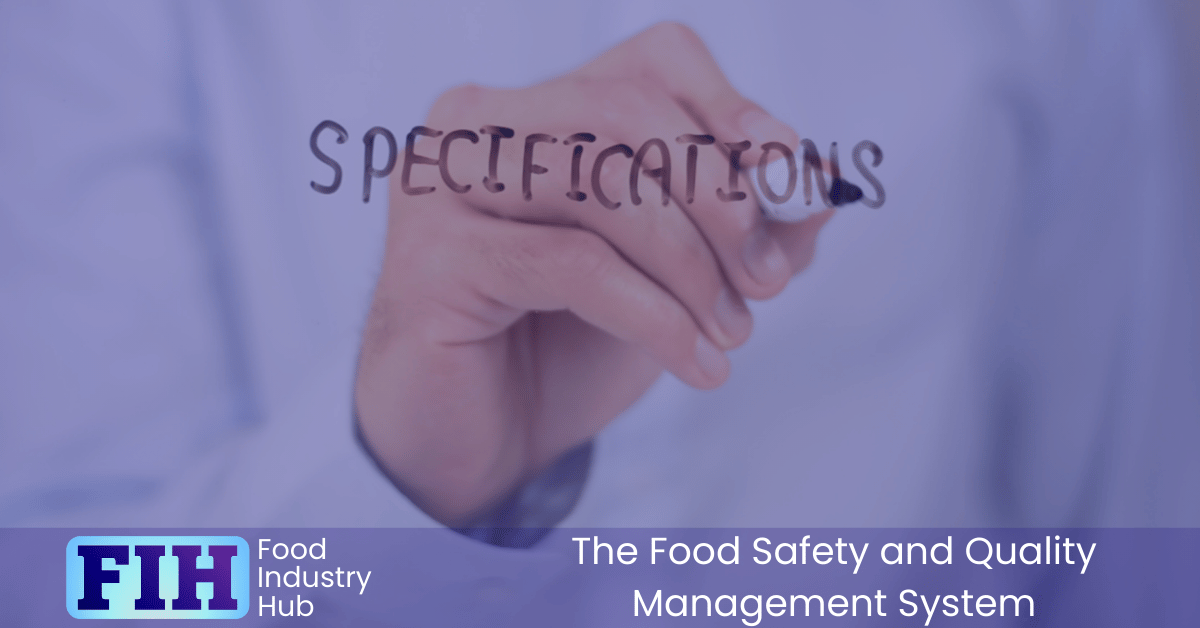
Corrective And Preventive Actions
Corrective actions address a detected issue, while preventive actions stop potential issues from happening.
It’s not just about fixing a problem; it’s about stepping in before a problem even occurs. That’s where preventive actions come in. You’ll need to be proactive, constantly identifying possible risks and taking steps to avert them. This might involve implementing new procedures or training sessions to improve your team’s food safety practices.
On the other hand, corrective actions are necessary when an issue arises. It’s important to act swiftly and decisively to rectify the situation. This could mean discarding a batch of food found to be contaminated or adjusting a faulty piece of equipment.
It’s crucial for your site to have solid procedures for addressing and rectifying issues identified in your food safety and quality management system.
This process must encompass a thorough root cause analysis and the establishment of preventive measures.
If a non-compliance threatens your product’s safety, authenticity, or legality, or if there’s a noticeable negative trend in quality, it’s your responsibility to investigate and put a stop to this recurrence.
The Site Must Have a Procedure for Handling and Correcting Issues Identified in The Food Safety and Quality Management System
To ensure the safety and quality of the food, your site must establish a robust procedure for identifying and rectifying issues within its management system.
It’s essential that you’ve a system in place to handle and correct issues identified. This isn’t just about identifying problems; it’s about conducting a root cause analysis and implementing preventive actions.
It’s a continuous cycle of identifying issues, analysing them, and taking action to prevent recurrence.
Where A Non-Conformity Places the Safety, Authenticity or Legality of a Product at Risk, Or Where There Is an Adverse Trend in Quality, This Must Be Investigated
When a product’s safety, authenticity, or legality is at risk due to non-conformity, or there’s a decline in quality, you must investigate.
You’ll need to document the non-conformity, assess its consequences, and identify immediate corrective actions.
It’s also crucial to analyse the root cause of the issue and set timelines for corrective and preventive measures.
In your food safety and quality management system, a crucial element involves thorough investigations and precise documentation of any non-conformity. If there’s a glitch, it’s pivotal to jot down specifics. This helps you understand the root cause, devise corrective actions, and avert recurrence.
Every investigation within your food safety and quality management system should involve a suitably competent and authorised person assessing the potential consequences.
They’ll examine non-conformities, identify risks to safety, authenticity or legality, and spot adverse quality trends.
This analysis guides corrective actions, ensuring you don’t just fix problems, but prevent their recurrence.
Utilise information from identified issues like product recalls or audits to undertake necessary corrective actions.
This not only addresses the immediate problem but also helps prevent recurrence, ensuring the safety and quality of your products.
Often, you’ll need to dig deeper into the issue that’s compromising your product’s safety or quality, so root cause analysis is crucial. It’s not just about patching the immediate problem – you must identify the underlying cause. Corrective actions won’t fully work unless they’re addressing the root cause.
Identifying the individuals responsible for corrective and preventive actions is a crucial part of investigations. When issues arise, you must ensure these individuals use data from various sources, like audits or complaints, to take necessary action.
Use information from audits, complaints, and product tests to guide your investigations.
It’s essential to set appropriate timescales for these actions. This ensures you quickly manage non-conformities that risk product safety, authenticity, or legality.
In order to maintain stringent food safety and quality standards, it’s imperative that you verify whether the corrective and preventive actions have been effectively implemented. Make sure you’re utilising data from all identified issues to ensure these actions prevent recurrence.
Root Cause Analysis Must Also Be Used to Prevent Recurrence of Non-Conformities, And to Implement Improvements When Trending Shows Recurrence
It’s not enough to just identify and correct these issues; you must dig deeper, find the root cause, and eliminate it to prevent reoccurrence.
Take note of trends. If you’re seeing a significant increase in a type of non-conformity, it’s a clear signal that you need to implement ongoing improvements.
Don’t wait for a crisis to take action. You’ve got to demonstrate you’re using these insights effectively.
It’s one thing to collect data from non-conforming products, internal audits, complaints, product recalls, product testing, second- and third-party audits, and online reviews. It’s another to leverage this information to make necessary corrective actions.
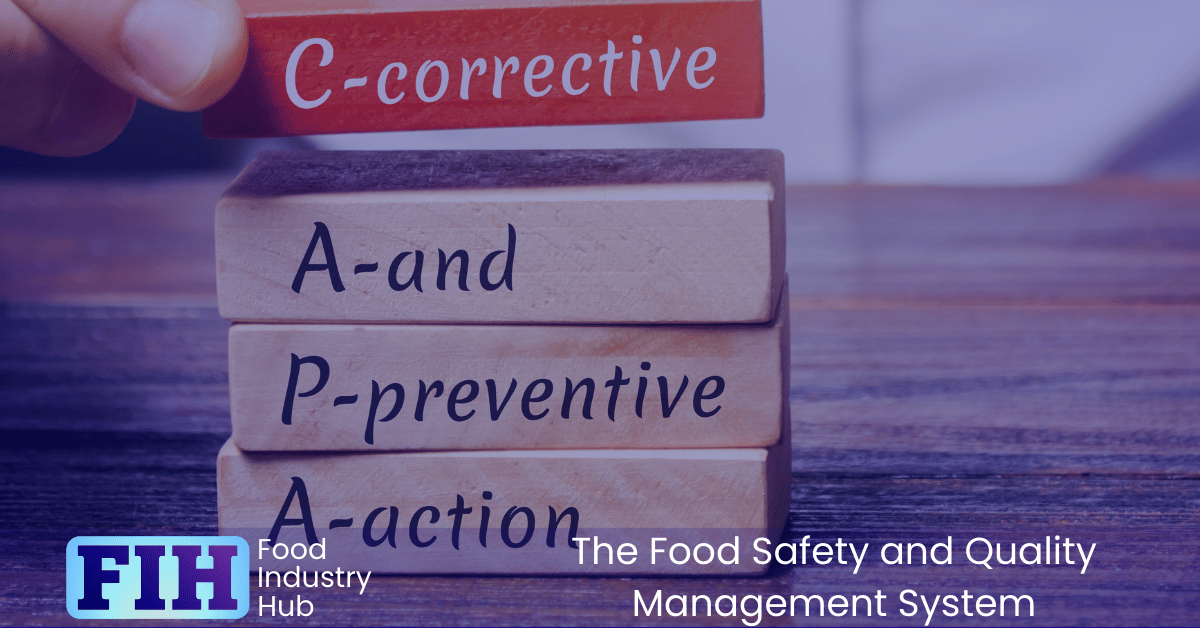
Control Of Non-Conforming Product
Product conformity plays a pivotal role in food safety and quality management.
It’s crucial for your business to maintain control over non-conforming products. This isn’t just about maintaining a good reputation – it’s about ensuring consumer safety.
When non-conforming products, those failing to meet your specified standards, are found, they must be identified and controlled. You’re responsible for preventing their unintended use or distribution. This can be done through segregation, containment, or even disposal of the non-conforming product.
In managing your food safety and quality system, it’s crucial that you effectively handle any product that doesn’t meet specification.
This means your team should be able to spot and report any potential non-conforming product immediately.
Let’s look at how this can be done, and why it’s so important to prevent unauthorised release of these products.
Procedures For Managing Non-Conforming Products Must Include the Requirement for Staff to Identify and Report a Potentially Non-Conforming Product
It’s crucial for you to have procedures in place for managing non-conforming products. Your staff needs to be able to identify and report these products effectively, and they must be securely stored to prevent accidental release.
Managing returned products and referring to the brand owner when necessary are also important steps in maintaining food safety and quality.
Ensuring the safety and quality of food products is a top priority, and this includes the management of any non-conforming items.
You must be able to identify and report any product that doesn’t meet specifications. This is key to preventing the unauthorised release of such products.
Always remember, your vigilance plays a vital role in maintaining food safety and quality.
Building on the need for staff to recognise and report non-conforming products, another critical step is implementing clear identification procedures.
You must ensure direct labelling or use IT systems to distinctly mark these items. It’s vital to prevent unauthorised release, so you can’t overlook this process.
You’re also responsible for secure storage to prevent accidental release. This can involve physical or computer-based isolation.
Don’t let an out-of-specification product slip through your fingers. It’s crucial you manage it effectively, and that includes reporting any potential non-conformance immediately.
Procedures for managing non-conforming products must also include referral to the brand owner where required. Don’t hesitate to refer to the brand owner, ensuring that non-conforming items are effectively managed and not released without proper authority.
When handling non-conforming products, it’s crucial to have defined responsibilities for making decisions about their use or disposal.
You need to ascertain the nature of the issue, then decide on an appropriate course of action, whether that’s destruction, reworking, downgrading, or concession acceptance.
Ensure your staff can identify and report such products to prevent unauthorised release.
It’s important to note the necessity of maintaining comprehensive records.
You must document decisions on the use or disposal of out-of-specification products. It’s crucial to prevent unauthorised release.
Ensure your staff can identify and report potentially non-conforming products. This record-keeping aids in both accountability and continuous improvement of your food safety system.
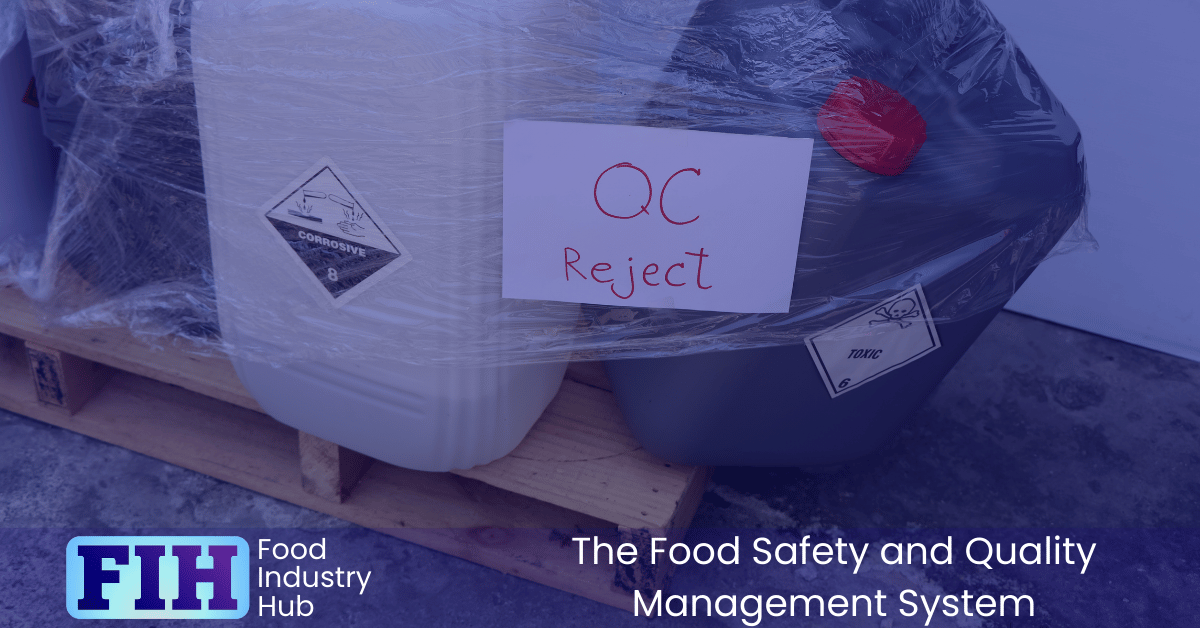
Traceability
Traceability is a critical component in any food safety and quality management system. It’s the key to ensuring that you can account for every ingredient or component used in your food products. It’s your map when you need to track and trace the origins and destinations of your products.
Think of it as your safety net. If something goes wrong, like a recall or a foodborne illness outbreak, you can quickly pinpoint where the problem started. This ability isn’t just convenient; it’s crucial. Without it, you’re potentially putting your customers at risk, and that’s not a gamble you can afford to take.
Traceability isn’t a one-size-fits-all concept. It varies depending on factors such as the size of your operation, the nature of your products, and the complexity of your supply chain. Regardless of these variables, the bottom line remains the same: you need a robust traceability system in place.
This involves establishing and documenting a traceability procedure that clearly defines how your system works, what labelling and records are required, and how it meets any legal requirements.
The identification of all materials, whether they’re raw, semi-processed, part-used, finished products, or under investigation, is crucial for maintaining traceability.
The Site Must Have a Documented Traceability Procedure
A documented traceability procedure is crucial for your site. It’s not enough to have an informal system or rely on memory. You need a solid, written procedure that keeps track of every bit of raw material that comes into your site, where it goes, and how it ends up.
Think of it as a map for your products, a clear, detailed guide that lets you know exactly where everything is at all times. This includes tracing raw material product lots, right from your suppliers, through every stage of processing, and out the door to your customers.
But that’s not all. You’ve also got to be able to trace these products in reverse, from your customers back to your suppliers.
Now, you might be thinking, “That sounds like a lot of work.” And you’re right. But it’s also a vital part of ensuring food safety and maintaining quality standards.
It’ll help you quickly identify and address any issues, which isn’t only good for your business but also essential for the wellbeing of your customers.
The Traceability Procedure Must Include How the Traceability System Works
Your traceability system needs to track all raw material product lots, including primary packaging, from your suppliers through each step of processing and dispatch to your customers and back again.
That’s a tall order, but it’s one that’s achievable with the right plan.
To start, you need to understand how the traceability system works. It’s not as complicated as it sounds. Basically, it’s a chain of information that documents the path of each product lot.
This chain starts at your suppliers and ends at your customers. Each link in the chain represents a stage in the processing and dispatch of the product lot.
The Traceability Procedure Must Include the Labelling and Records required
To ensure comprehensive traceability, proper labelling and record-keeping are non-negotiable. You need to meticulously label every raw material product lot, including the primary packaging. This should detail all key information like the supplier’s name, dispatch date, batch code, and other relevant data.
The records required are equally crucial. It’s not enough to just label; you must keep a detailed log of each material’s journey, from procurement to dispatch. This ensures that you can trace back any product to its initial source if necessary.
You’ve got to document every stage of processing and dispatch. Your records should capture the product’s movement through your facility, all its interactions with other products or equipment, and finally, its dispatch to your customers.
The Traceability System Must Meet the Legal Requirements
Building on the foundation of meticulous labelling and record-keeping, it’s now your responsibility to ensure your traceability system adheres to the legal stipulations of your target market. Each country has its own legal requirements for food safety and quality management systems.
You’ll need to become familiar with these regulations to ensure your traceability system is compliant. It’s not just about knowing where your raw materials are coming from and where your products are going, but also understanding the legal implications of these journeys.
You must be able to trace all raw material product lots from suppliers through all stages of processing and dispatch to customers, and vice versa.
Your traceability system should be robust enough to track and record all this information accurately and promptly.
Identification of Raw Materials Must Be Adequate to Ensure Traceability
Every single raw material, down to the primary packaging, requires thorough identification to ensure complete traceability. This is crucial in the food industry. It’s not just about knowing what’s in your products; it’s about knowing exactly where each component came from and where it goes.
It doesn’t stop at raw materials. Whether it’s intermediate, semi-processed goods, part-used materials, finished products, or even materials pending investigation, you need to have a strong identification system in place. This isn’t just about meeting regulations or passing audits. It’s about ensuring safety, maintaining quality, and upholding your company’s reputation.
Consider your suppliers. Can you trace all raw material product lots from them, through all stages of processing and dispatch, to your customers? If not, it’s time to strengthen your traceability systems.
And what about the reverse? If a customer had a problem, could you trace the product back through every stage to your supplier? If you can’t, you’re not just risking a failed audit, you’re risking your customers’ trust.
The Site Must Test the Traceability System to Ensure Traceability Can Be Determined from The Supplier to the finished Product And Vice Versa
Testing your traceability system is an absolute must. It’s essential to ensure that all product groups, from raw materials to finished goods, can be traced back and forth. This includes everything, from the primary packaging you receive from your suppliers, right down to the finished products you dispatch to your customers.
Think of it as a two-way street. You should be able to trace back every product lot, not just to your suppliers but also to the exact batches of raw materials from which it originated.
Similarly, you should be able to trace forward every raw material lot, through each stage of processing, to the specific batch of finished product it ended up in.
This isn’t a mere formality. It’s a vital tool that can help you quickly identify and isolate any potential problems.
If an issue arises with a certain batch of products, you’ll want to know exactly where the raw materials came from, and where else they might’ve been used.
For Food Raw Materials And finished Products the Test of The Traceability System Must Include a Quantity Check / Mass Balance
When it comes to food raw materials and finished products, including printed packaging and labels with food safety and legal information, your traceability system should be up to the task of conducting a quantity check or mass balance.
In simple terms, a quantity check or mass balance means you’re able to account for all the raw materials used in your products. You track them from the moment they arrive at your site, through every stage of processing, right up to dispatch.
And it doesn’t end there. If a problem occurs, you should be able to trace a product back through all those stages, right back to the supplier.
Sure, it’s a big job, but it’s vital. With a robust traceability system, you’re not just protecting your customers, you’re protecting your brand.
It’s about trust, and ensuring that if something goes wrong, you can find out why and where it happened, and make sure it doesn’t happen again.
After all, it’s your reputation on the line.
Testing The Traceability System
It’s essential to understand that a thorough traceability test isn’t just about tracking raw materials.
It’s a comprehensive process, requiring a summary of documents to be referenced during the test. You’ll need to clearly demonstrate the connections between these documents, making it easy to follow the trail of your products from supplier to customer.
The test can’t be a one-off event; it’s got to happen at a predetermined frequency. At the very least, you should be conducting this test annually.
It’s not just about doing the test but ensuring its results are retained for inspection. These records act as proof of your diligence in maintaining food safety and quality.
Remember, your site should be able to trace all raw material product lots, including primary packaging, from suppliers through all stages of processing to customers.
And it’s equally important that this traceability works in reverse too.
Falling short in any of these areas can compromise your overall food safety and quality management system.
Traceability Should Be Achievable Within 4 Hours
In just four short hours, your site should be capable of tracing all raw material product lots, including primary packaging, from suppliers through every stage of processing and its eventual dispatch to customers – and back again.
This quick turnaround isn’t just a lofty goal, but a crucial aspect of maintaining food safety and quality standards.
If a problem arises, you’re not left scrambling. You have the roadmap to trace it back swiftly, identify the issue, and rectify it before it escalates.
This traceability reduces the risk of a food safety incident dramatically and protects your brand’s reputation.
Where Rework or Any Reworking Operation Is Performed, Traceability Must Be Maintained
You might be wondering what happens when a product needs to be reworked or reprocessed. Let’s imagine a scenario where a batch of product didn’t turn out as expected. In such cases, the product may not just be tossed. It may be reworked – but the question is, how do you keep track of the traceability details for that product?
This is where traceability comes in. It’s an essential part of the food safety and quality management system. It’s not just about keeping track of the final product, but it’s also about tracing all raw material product lots, including the primary packaging, from suppliers through all stages of processing and dispatch to customers, and vice versa.
When you’re reworking a product, you must maintain this traceability. This means, you’ll need to keep a detailed record of what was done, when it was done, and what became of the re-processed material.
Each reworked batch should be clearly identified and linked back to the original batch, ensuring all information is kept intact. This way, if there’s a problem with the reworked product, you can track it back to its source, helping you quickly address the issue and prevent it from happening again.
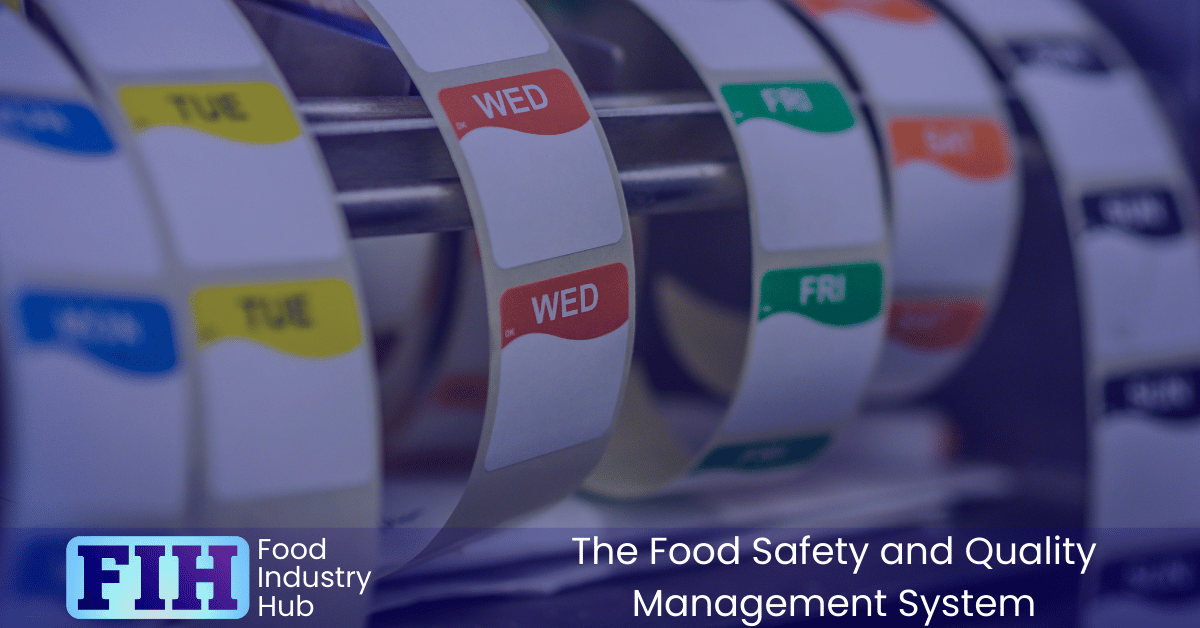
Complaint-Handling
When handling customer complaints, proper execution of procedures is crucial to maintaining high food safety and quality standards. You can’t just wing it; you need a system in place that ensures every complaint is treated with the seriousness it deserves.
Your complaint-handling system must be a well-oiled machine. It should swiftly process complaints and guide you to find a solution that satisfies the customer and adheres to food safety regulations. It’s not just about placating the customer; it’s about learning from every complaint. It’s a fact-finding mission to uncover any potential issues in your food safety and quality management system.
You must ensure that every customer complaint is recorded and thoroughly investigated.
It’s essential that staff trained to handle these matters take swift, effective action in proportion to the severity and frequency of the issues identified.
Analysing complaint data for significant trends and utilising root cause analysis for major complaints can help implement ongoing improvements and prevent recurrence.
All Complaints Must Be Recorded and Investigated, And the Results of The Investigation Recorded
To ensure the highest quality and safety in our food system, it’s crucial that all complaints are recorded and thoroughly investigated. When you receive a complaint, it’s not just a chance to rectify an issue for one unhappy customer; it’s an opportunity to improve your overall system.
Look at complaints as valuable feedback. They’re a direct line of communication from those who matter most – your customers. Recording them isn’t just about ticking off a box in a procedure; it’s about learning what you’re doing right and where you can improve.
When you investigate a complaint, dig deep. Don’t just solve the immediate issue; look for the root cause. Ask why it happened, how it happened, and what can be done to prevent it from happening again. This isn’t just about damage control; it’s about continuous improvement.
Once your investigation is done, don’t forget to record your findings. It’s no use learning from your mistakes if you don’t remember what those lessons were. Your records will serve as a roadmap, guiding you away from recurring issues and towards a safer, higher-quality food system.
Actions Appropriate to The Seriousness and Frequency of The Problems Identified Must Be Carried Out Promptly and Effectively
After examining and recording customer complaints, it’s time to take action. As part of a robust food safety and quality management system, it’s your responsibility to ensure that problems are addressed promptly and effectively. This isn’t a job for the untrained or the uncommitted. It requires appropriately trained staff, with a clear understanding of the importance and seriousness of the work.
When a complaint comes in, it’s important to assess its seriousness and check for recurrence against existing trends. Don’t let minor issues slip through the cracks because you’re too focused on the big ones. Even small problems can add up over time, leading to a significant decrease in product quality and customer satisfaction.
Next, you need a plan. What actions will you take to resolve the problem? These should be proportionate to the severity and frequency of the issue. A single, minor complaint might only need a simple fix, while a recurring, serious issue will require a more comprehensive solution.
Complaint Data Must Be Analysed for Significant Trends
Analysing complaint data for significant trends is a crucial part of your food safety and quality management system. It’s not just about resolving issues as they arise; it’s about digging deeper and identifying patterns. If there’s a spike in a specific complaint or a severe issue emerges, it’s a red flag you can’t ignore.
You should then perform a root cause analysis. This isn’t a blame game, but a fact-finding mission to pinpoint the source of the problem. Once you’ve identified the root cause, you’re in a position to make long-lasting improvements to your product’s safety, legality, and quality. It’s a powerful tool to prevent repeat occurrences, enhancing customer satisfaction in the process.
Don’t keep this analysis a secret. Share it with relevant staff. They’re the ones on the front line, dealing with the products and the customers. They need to be aware of the issues and the steps taken to rectify them.
This transparency fosters a culture of continuous improvement and accountability, which is the lifeblood of a robust food safety and quality management system.
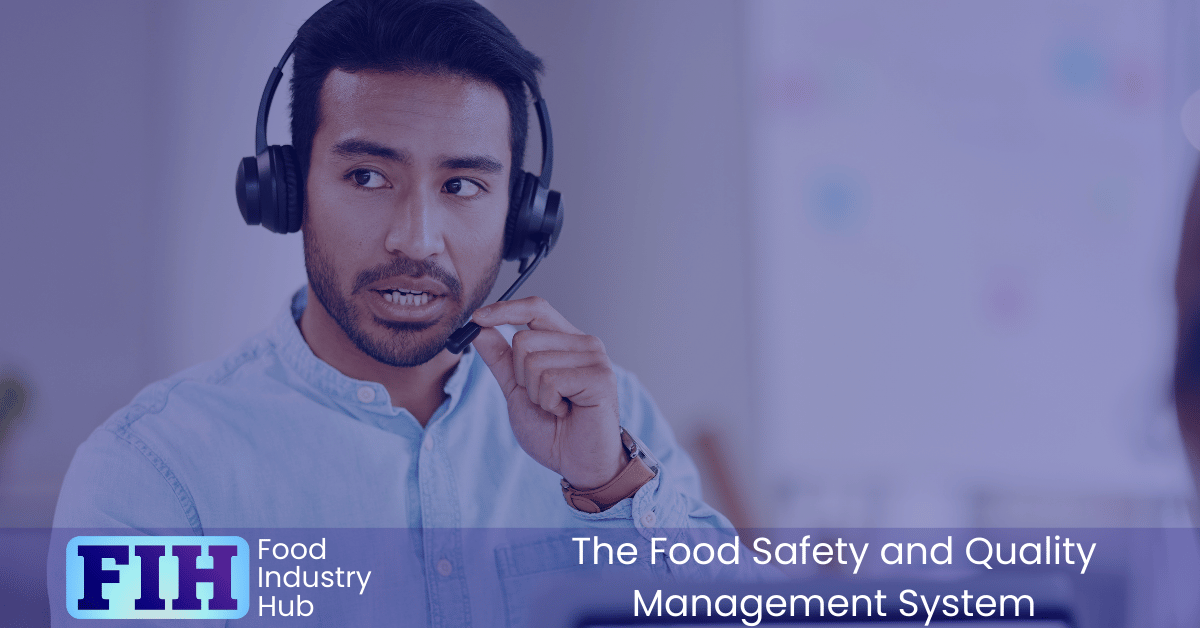
Management of Incidents, Product Withdrawal and Product Recall
When dealing with food safety, you may encounter incidents that require product withdrawal or even a complete product recall. It’s a risk, given the complexity of food production and distribution systems. The key is how you manage these incidents.
You’ve got to act quickly and decisively. The health of your customers and the reputation of your company are on the line.
First, identify the problem. Is it a safety issue or a quality issue? Next, determine the scope of the issue. Is it confined to a single batch, or does it affect an entire product line?
Then, you’ll need to decide whether a product withdrawal or a full recall is necessary. A withdrawal is usually the first step, removing the product from the supply chain but not necessarily from consumers’ homes. A recall is more severe, actively seeking to remove the product from consumers’ possession.
Your company needs a well-thought-out plan to manage any incidents that could impact food safety or quality.
This should include contingency plans and procedures for reporting and managing emergencies.
There should be a clear, always-accessible system for product withdrawal or recall if needed.
The Company Must Have Procedures Designed to Report and Effectively Manage Incidents and Potential Emergency Situations
To keep your business running smoothly, you need robust procedures in place to handle any incidents or potential emergencies that could jeopardise food safety, authenticity, legality, or quality.
It’s not just about having a plan; it’s about having a system that allows for swift reporting and effective management of any issues that arise.
The importance of this can’t be overstated. Imagine there’s a breach in food safety standards, or a question of legality arises. You don’t just need to know about it, you need to act on it immediately. Otherwise, you’re putting your customers’ health at risk, and your business’s reputation on the line.
It’s also vital for your company to have a system in place for the withdrawal and recall of products if necessary. This could be due to a range of reasons, from contamination to mislabelling.
You need to be able to act swiftly and efficiently to minimise damage and ensure consumer safety.
The Incidents and Emergencies Procedure Must Include Consideration of Contingency Plans to Maintain Product Safety, Authenticity, Legality and Quality
As part of your incidents and emergencies procedure, you need to have contingency plans in place for disruptions to key services such as energy, transport, and communications.
Your plans should also consider the impact of natural disasters, malicious contamination, product contamination, and cyber-security threats.
It’s essential that these plans allow for effective management of incidents and facilitate the withdrawal and recall of products if necessary.
This should account for disruptions to key services like water, energy, transport, refrigeration, staff availability, and communications.
With a solid plan, you’ll manage incidents effectively, and if needed, withdraw or recall products to maintain safety, authenticity, legality, and quality.
Ever thought about what could happen in the event of a fire, flood, or natural disaster? It’s critical you’ve a plan to manage these incidents effectively. This includes your ability to effectively recall products, if needed, under extreme and challenging circumstances.
Imagine the unthinkable – a case of deliberate contamination or sabotage. Your procedure should define actions to be taken in the face of intentional contamination or sabotage or products.
In today’s highly digital world, it’s also essential for your company to have robust plans in place for potential failures of, or attacks against, your digital cyber-security systems.
You need to be prepared to handle these threats swiftly, ensuring product safety, authenticity, legality, and quality.
Remember, the existence of a category of risk associated with digital systems shouldn’t mean avoiding their use – which would be impractical and disproportionate in the modern environment – but risk exposure should be acknowledged and planned for.
Where Products Which Have Been Released from The Site May Be Affected by an Incident, Consideration Must Be Given to The Need to Withdraw or Recall Products
You must always be prepared for the unexpected when it comes to managing food safety. That includes having a plan for when incidents occur that may affect your products. These incidents could be anything from a power outage to a contamination issue.
When such incidents occur, you’ll need to assess whether the products that have left your site may have been impacted. If there’s a chance that your products have been affected, you’ll need to consider whether it’s necessary to withdraw or recall them.
This isn’t a decision to be taken lightly. It can have a significant impact on your company’s reputation, balanced against the potential health risks to consumers. You don’t want to be scrambling to figure out what to do in the midst of a crisis.
That’s why it’s crucial to have a system in place that allows for the effective management of incidents. This system should be robust enough to enable the withdrawal and recall of products, should the need arise. The severity of consequence means that undertaking a decision to initiate recall or withdrawal can be stressful enough, without having to simultaneously worry about how to take that action.
It’s about being proactive, not reactive, in your approach to food safety. After all, it’s better to be safe than sorry.
The Company Must Have a Documented Product Withdrawal and Recall Procedure
In your company, it’s crucial to have a well-documented product withdrawal and recall procedure.
This should outline the roles of your recall management team, provide guidelines for determining if a product needs to be pulled, and specify the records you need to keep.
Timely communication with customers, regulatory authorities, and key contacts should be a part of your plan, along with details of external agencies to consult for advice and support.
The product withdrawal and recall procedure must include identification of key personnel constituting the recall management team, with clearly identified responsibilities.
You also need clear guidelines to decide when a product should be recalled or withdrawn.
The procedure must include an up-to-date list of key contacts (including out-of-hours contact details) or reference to the location of such a list (e.g. recall management team, emergency services, suppliers, customers, certification body, regulatory authority.
It’s essential to have an updated list of key contacts at your fingertips.
You’ll need immediate access to these contacts to effectively manage any recall or withdrawal situation.
It’s essential to have a solid product withdrawal and recall procedure in place. This includes a well-orchestrated communication plan to inform customers, consumers, and regulatory bodies promptly.
Your product withdrawal and recall procedure isn’t complete without the involvement of necessary external agencies.
You’ll need specialist labs, regulatory authorities, and legal experts for advice and support. They’re invaluable in managing incidents effectively.
So, ensure your plan includes these external resources.
It’s not just about having a procedure; it’s about having a procedure that’s robust, comprehensive, and ready for any situation.
Building on the necessity of external support, an equally significant component of your recall procedure is having a solid plan for product traceability, recovery, or disposal of the affected item, and stock reconciliation.
You’ll need a system to handle these logistics efficiently. This isn’t just about managing potential incidents, but it’s about being prepared to withdraw or recall products if required.
To ensure swift and effective handling of incidents, your company’s product withdrawal and recall procedures must include a plan to record the timings of key activities.
It’s crucial to keep track of when each step is completed. This way, you’ll have a clear timeline of events, aiding in efficient communication and decision-making during a potential product recall.
Always remember to document your procedure.
This way, you’ll not only address the problem but also prevent its recurrence.
The Procedure Must Be Capable of Being Operated at Any Time
Ensuring your company’s procedures are always ready to swing into action is crucial. You never know when an issue will arise, so it’s necessary to be prepared to operate your food safety and quality management system at any time. This means having a robust plan in place that can quickly manage incidents and enable the withdrawal and recall of products if needed.
In the food industry, issues can arise at any hour. That’s why your procedure can’t just be a nine-to-five operation. It must be capable of being activated instantly, regardless of the time or circumstances. Your staff should be trained to act swiftly and decisively, even in the face of unexpected challenges.
Remember, it’s not just about responding to an incident, it’s about managing it effectively. This requires a well-structured plan that clearly outlines each step of the process. From identifying the problem, notifying relevant stakeholders, recalling affected products, to providing clear communication to consumers, every aspect must be covered within your procedure.
Having a procedure that can be operated at any time isn’t just a safety measure—it’s a key part of maintaining trust with your customers and safeguarding your company’s reputation.
The Incident Management Procedures (Including Those for Product Recall and Withdrawal) Must Be Tested At Least Annually
Regular testing of your incident management procedures, including those for product recall and withdrawal, is a requirement of any robust food safety and quality manual. You must conduct these tests at least once a year to ensure the effective operation of these systems.
Remember, the goal isn’t just to tick off a box on a compliance checklist. You’re striving to ensure the safety and quality of your food products.
Keep detailed records of your test results. This isn’t just about having proof of compliance. It’s about having data to analyse and learn from. Record the timings of key activities. This information can be invaluable in identifying bottlenecks or delays in your processes.
Don’t just file away the results of your tests, use them to improve. If a recall does occur, review your procedures. Where did they succeed? Where did they fall short? Apply these lessons to fine-tune your incident management procedures.
Continual improvement is the name of the game.
Don’t forget, the objective is to have a plan and system ready to manage incidents effectively and recall products if necessary. Your commitment to this can make all the difference.
In The Event of a Significant Food Safety, Authenticity or Legality Incident Including Recall or Withdrawal, The Site’s Management Team Must Inform the Certification Body for Any Food Safety and Quality Assurance Schemes the Site Operates To
When a significant food safety, authenticity, or legality incident arises – recall or withdrawal included – it’s your management team’s duty to promptly notify the certification body.
That’s not just a suggestion, it’s an absolute must, regardless of the food safety and quality assurance schemes your site operates under.
Don’t underestimate the importance of this step. Timely reporting helps to minimise the potential impact on public health and your brand reputation.
It’s not only about doing what’s right but also about protecting your business from further damage.
Your management team should have a solid incident management system in place.
This means you’ve got plans and procedures that enable you to effectively manage these incidents.
You’re prepared to withdraw or recall products if necessary.
And all this isn’t just on paper. You’re testing these procedures at least annually, ensuring their effectiveness.
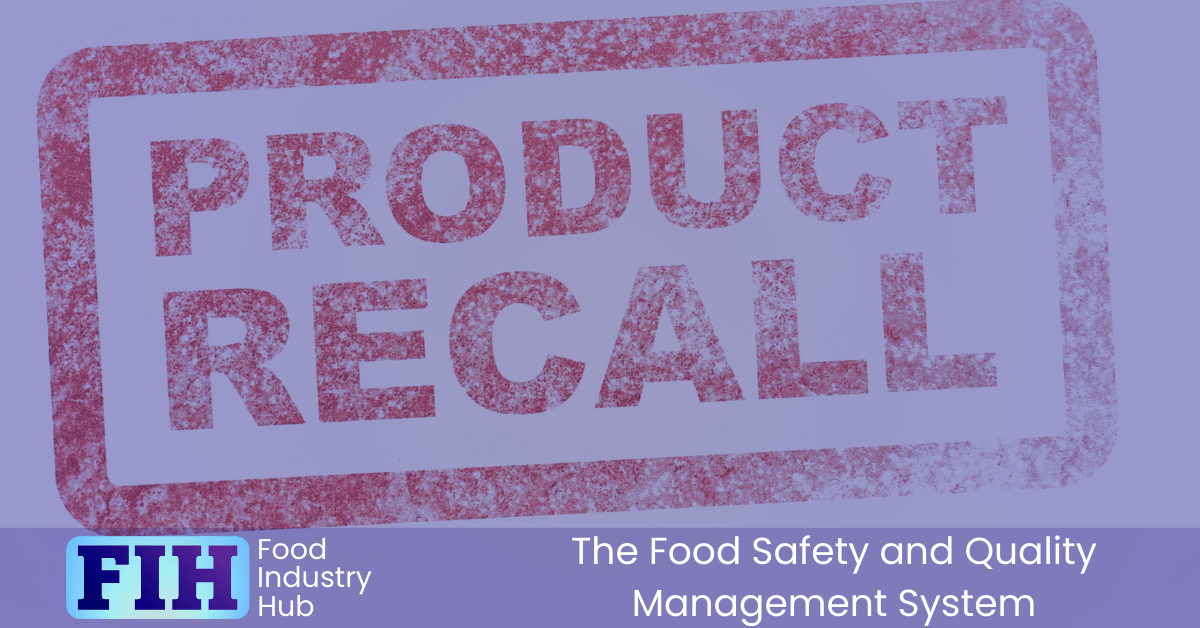
In Summary
You’re part of a system that ensures safe, high-quality food production. Your role in documenting processes, controlling documents, and maintaining records is crucial. You help verify the effective application of the food safety plan. Your commitment to internal audits and the food safety and quality management system promotes transparency and builds consumer trust. Remember, your dedication safeguards public health.
You’re responsible for ensuring food safety and quality through strong supplier relationships, ongoing reviews, and comprehensive risk assessments. Make sure you understand and manage all potential risks from raw materials and packaging. Have procedures in place for accepting these materials and for corrective actions when issues arise. Remember, maintaining the integrity of your food products is not just about safety, but also about protecting your brand’s reputation and fostering trust with consumers.
Your business must effectively manage out-of-spec products and trace all raw materials from suppliers to customers. Handle customer complaints efficiently, using feedback to lower recurring issues. Have a system in place for incident management, product withdrawal, and recall. Remember, a robust Food Safety and Quality Management System isn’t just about meeting regulations – it’s about ensuring public health and preserving your brand’s reputation. Keep improving, keep safeguarding.
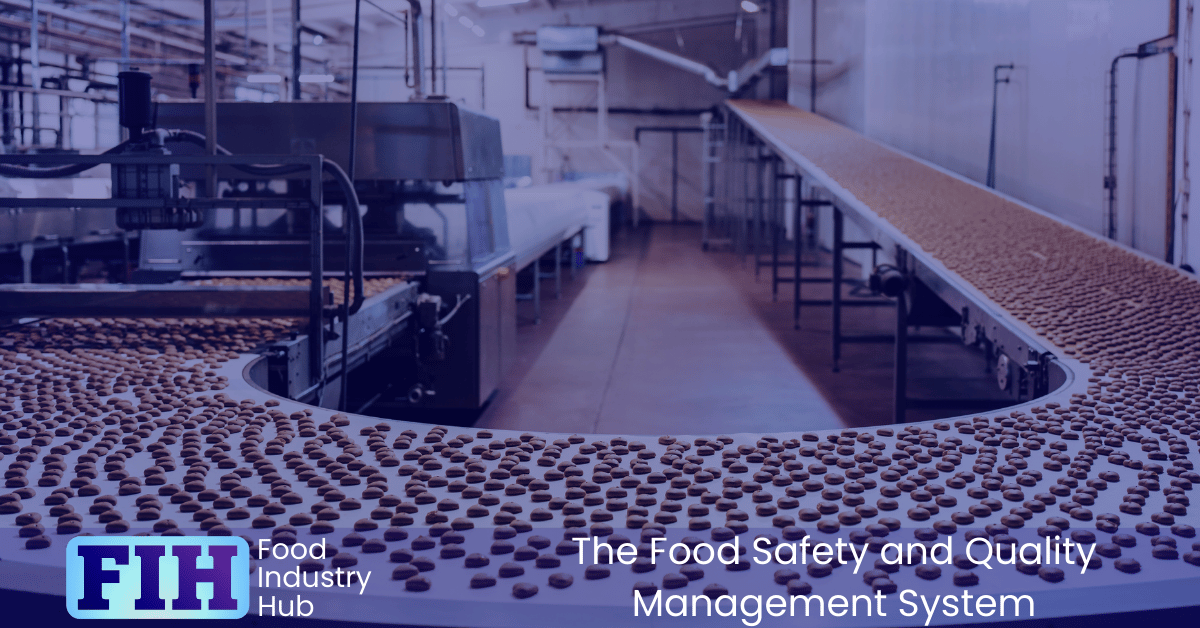
Further Resources
Food Industry Hub serves the food industry with a range of digital resources for the benefit of both commercial food manufacturers and food industry professionals.
For food manufacturers, we offer integrated management systems that give every user a direct interface with your QMS.
For food industry professionals, we provide an extensive signposting service in addition to informational content we hope you’ll find useful as you face new professional challenges. We have very ambitious plans to expand the range of services offered, and currently present informational content on management, safety and quality, food safety and quality culture, and professional success.

